

Red Fort / Lal Kila Delhi (Entry Fee, Timings, History, Built by, Images & Location)

Red Fort Delhi Entry Fee
- 35 per person for Indians
- 500 per person for Foreign Tourists
- 25 for Video Camera
- 80 per person for adults on weekends (Light & Sound show)
- 30 per person for children on weekends (Light & Sound show)
- 60 per person for adults on weekdays (Light & Sound show)
- 20 per person for children on weekdays (Light & Sound show)
Red Fort Delhi Phone
011 2327 7705, quick facts about red fort.
- Type : Monument
- Status : UNESCO world heritage site
- Original Name : Qila-e-Mubarak, which means the Blessed Fort
- Red Fort Area : Spread over an area of about 256 acres
- Red Fort Gates : 2 entrances namely Delhi Gate & Lahori Gate
- Red Fort Built in : Construction of Red fort started in 1638 and was completed in 1648.
- Red Fort Architect : Architect Ustad Ahmad Lahauri
- Nearest Metro station to Red Fort : Chandni Chowk Metro Station
- Red Fort Location : Netaji Subhash Marg, Near Chandni Chowk
Red Fort Delhi Timings
Red Fort Light & Sound Show Timings are: Hindi: 7.30 PM to 8.30 PM (May to Aug) 7 PM to 8 PM (Sep & Oct) 6 PM to 7 PM (Nov to Jan) 7 PM to 8 PM (Feb to Apr) English: 9 PM to 10 PM (May to Aug) 8.30 PM to 9.30 PM (Sep & Oct) 7.30 PM to 8.30 PM (Nov to Jan) 8.30 PM to 9.30 PM (Feb to Apr)
Links: Website | Map

Red Fort Delhi Address : Netaji Subhash Marg, Chandni Chowk , New Delhi , Delhi , 110006 , India
About Red Fort Delhi
A Delhi Tour is synonymous with a trip of Red Fort, famously called as Lal Kila of Delhi (Urdu: لال قلعہ, Hindi: लाल क़िला). Originally Red Fort was known as 'Qila-I-Mubarak' (Urdu: قلعہ مبارک, Hindi: क़िला मुबारक), meaning a residence for the royal family. Comprising of many buildings with intricate carvings, floral motifs, double domes and majestic defence wall of around 2.5 km, Red fort is spread over an area of 255 acres.
Built as palace of Shahjahanabad which was the capital city of fifth Mughal emperor it is now one of the most popular monuments not only of Delhi but of India. It was Emperor Shah Jahan who built Red Fort ; he also created another popular architecture of India- Taj Mahal of Agra. Owing to the red sandstone used for its construction, this fort is called as Red Fort.
With an impressive structure of red sandstone and rich historical background and a prominent national importance, Red Fort Delhi is a place which must be visited by all. Delhi Red Fort has been recognized as a UNESCO world heritage site too.
History of Red Fort in Delhi
History of Red Fort starts with the very first question of who built the Red Fort. Red Fort was built by Shah Jahan. In the year of 1639, Shah Jahan, decided to shift capital of Mughal Empire Agra to Delhi by the side of River Yamuna. Architect Ustad Ahmad Lahauri was then assigned the task of building the Red Fort.
Construction of Red Fort, Delhi was completed in the year 1648 . The construction of the fort took almost a decade for the completion. Red Fort is adjacent to another fort named Salimgarh, which was built in 1546 by Islam Shah Suri, the second emperor of Sur Dynasty.
Red fort history is not only associated with Mughals but is also symbolic of an important part of India’s past, denoting a timeline of the years it has gone through. The architectural excellence of Red Fort later influenced many other monuments of the country.
Red Fort in Delhi, India is not a prominent structure of past but hold equally important place even in present. It is the place from where Prime Minister of India hoists national flag every year on the eve of Independence Day, on August 15th. This has been the tradition since the year of independence in 1947.
Architecture of Red Fort
Red Fort Delhi is the creation of architects Ustad Ahmad and Ustad Hamid. Architecturally, Red Fort or the Lal Quila surpasses many monuments of the world with its carefully planned layout and impressive structure. For instance, if the layout has to be compared, Delhi Red Fort is planned in a better way than the Red Fort of Agra.
The first thing that you will notice about the Red Fort is its massive structure and its red colour. The stone used in red fort is red sandstone , which resulted in the brick red colour of the fort. The fort was used for a wide range of purposes keeping which in mind it has been built.
The tallest structure of the fort is around 33 meters high. The Delhi Red Fort is in the shape of an irregular octagon, comprising of long east and west sides along with two main gates on the western side and the southern side. The walls of the fort along with a few parts have been constructed with red sandstone while rest of the part has been built using marble.
Some of the prominent sections of the fort that are sure to leave you enchanted are Diwan-i-'Aam, Diwan-i-Khass, Tasbih-Khana, Nahr-i-Bihisht, Delhi Fort Museum- Mumtaz-Mahal, Hammam, Moti-Masjid, Hayat-Bakhsh-Bagh, Chhatta-Chowk, Zafar-Mahal, Rang-Mahal, etc.
Later with the advent of British, Lal Qila also came under their rule. Red Fort under British rule went through a lot of changes, in spite of which it didn’t lose the hypnotic charms of its alluring architecture.
Image Gallery Red Fort Delhi / Lal Kila, Delhi

Inside the Red Fort
Delhi gate of red fort.
No description about Red Fort is complete without mentioning Delhi Gate. Located on the southern wall of the Red fort, towards the entrance is the Delhi Gate. Named after the city, the look of this gate is similar to the Lahori Gate of the fort.
Also known as Dilli Darwaza , Delhi Gate was constructed during the reign of Shah Jahan, while it has barbican facing the west which was constructed by Aurangzeb.
Delhi Gate has three stories, each adorned with arched panels in the rectangular, cusped and square shape which are then bordered by the towers of semi-octagonal shape. These towers are then covered by octagonal shaped open pavilions.
The pavilion roof is made up of white stone while the gate is constructed with red sandstone. There are small canopy with seven miniature domes between these two pavilions. These walls have flame shaped fortification.
Towards the right side of the gate, the last emperor was kept in captive; this was in year 1857. Between the inner and outer gates, stone elephants without any riders were placed by Lord Curzon.
Lahori Gate of Red Fort
Located on the western wall, Lahori Gate is the main entrance of the Red Fort Delhi . It is undeniably one of the most popular parts of the Red Fort as it is the place from where Prime Minister of India hoists national flag on the eve of Independence Day every year . This has been the tradition since the year of India’s independence in 1947. The name of this gate is derived from the fact that it leans towards the Lahore district of Pakistan.
Similar to the Delhi Gate in structure, Lahori Gate of Red Fort also consists of three stories with arched panels in square, rectangular and cusped shape. Semi octagonal towers cover it with open octagonal pavilions.
The gate is made up of red sandstone while the pavilions are built of white stone. There is a small covering with 7 domes between the two pavilions. After entering the fort via Lahori Gate, one can see a covered market area called as Chatta Chowk.
Chhatta Chowk in Red Fort
Located behind the Lahori Gate, Chatta Chowk is a covered bazaar. An important part of Delhi Lal Kila , it presents a glimpse of unique Mughal architecture. The words Chatta Chowk mean covered market. It is a long passage which is in the shape of an arch. This market is consisted of two storied flats which have 32 arched bays. These bays served as shops selling specialized items catering to the needs of the royal household.
The items sold in this market range from precious stones, gems, silverware and gold to velvet, silk and brocades. It was in 17th century when Chatta Chowk of Red Fort came into existence after Shah Jahan visited the market of Peshawar in 1646. During 20th century, this market underwent renovations when the arches were enclosed owing to which it lost its original touch.
After crossing Chhatta Chowk, you will reach the drum house called as Naqqar-Khana or Naubat . It is the place where ceremonial music used to be played. From here, one enters the Diwan-i-'Am. There is Indian War Memorial Museum on its upper storey.
Diwan-i-Aam of Red Fort
Diwan-i-Aam, as the name suggests is the hall of public audiences. This rectangular shaped hall is the place where Mughal emperor used to meet his pupils; a massive railing was built to separate emperor from the people. Diwan-I- Aam has an alcove with a marble canopy where emperor used to sit and listen to the complaints and issues of the masses.
Adorned with stucco work, it is one of the most beautiful parts of the Red Fort . The pietra dura or the parchin kari work on the panels of the throne was created by a Florentine artist named Austin de Bordeaux. Behind this hall, there is a huge courtyard consisting of a range of artistic structures.
The Rang Mahal of Red Fort
Red Fort Rang Mahal referred as “Palace of Colours”, is one of the grand harems which was later used as a mess hall by the British after their conquest of the fort. It is a huge hall with an arched façade and domed compartments on both the southern and northern ends.
Interiors of this hall have been painted intricately in various colours, which also lead to the name of Rang Mahal. The ceilings of a few of the apartments here are covered artistically with small pieces of mirror, owing to which it is also called as Sheesh Mahal , meaning palace of mirrors.
At the centre of Red Fort Rang Mahal , there is marble basin with an ivory fountain. A shallow water channel known as Nahr-i-Bihisht used to flow into this basin. Nahr-i-Bihisht means stream of paradise.
Diwan-i-Khas in Red Fort
Diwan-i-khas is another important part of Delhi Red Fort. Referred as Hall of Private audiences, it is a huge hall with captivating interiors. It was originally used by the Emperor for private and confidential meets with his royal guests and ministers. This chamber is in rectangular shape with arched entrances built on sturdy piers.
Floral designs on the piers and carvings on the arches along with ceilings that are adorned with pillared umbrellas make Diwan-i-khas a place worth admiring. Adding to this are the walls of this hall which are decorated with holy verses.
At the centre of the chamber, there used to be the famous peacock throne which was late stolen by the Persian conqueror Nadir Shah. The throne is currently displayed in the New York Metropolitan Museum.
Khas Mahal of Red Fort
Khas mahal, referred as the special palace, was the private abode of the Mughal Emperor. This massive structure consists of various parts including a sitting room called as baithak ; wardrobe room called as tosha-khana ; a sleeping room which is known as khwabgah and Tasbih-khana which is a chamber for counting beads, for the purpose of private prayers. The interiors have been decorated in colourful floral designs with partly golden ceilings.
While walking towards the Khas Mahal, on its eastern side you will see a projecting tower called as Muthamman Burj . From this octagonal tower, every morning emperor used to spear in front of the masses. In 1808 Akbar Shah II added a balcony to the Burj. Later in the year 1911, King George V and Queen Mary have appeared before the public from this balcony.
Red Fort Museum
Located in the Mumtaz Mahal of the Lal Kila , Red Fort Archaeological Museum presents an interesting display of objects associated with Mughal era. Popularly known as Red Fort Museum or the Palace Museum, it consists of 6 galleries, each boasting of a rich collection.
Red Fort Museum displays various items ranging from manuscripts, stone inscriptions, miniature paintings, royal orders and various other items related to Akbar I and other Mughal emperors.
There is a separate gallery showcasing a wide variety of jade items such as swords, daggers, celadon, porcelain, tiles, textiles, dresses, carpets, pillows, curtains etc.
Bahadur Shah Zafar gallery is one of the most interesting sections of the museum. It displays objects not only belonging to the last Mughal Emperor Bahadur Shah II but also of his queen. Items such as rose water sprinkler, power horns, toilet box, pen holder inkpot, photograph of Bahadur Shah in the prison at Rangoon, etc., are displayed.
This museum also contains portraits of renowned court poet like Mirza Ghalib, Bahadur Shah’s letter to Queen Victoria, weapons used by Bahadur Shah and the Nawab of Pataudi, portraits of Bahadur Shah and an ivory painting of Zinat Mahal, etc.
This museum is now under the protection of Archaeological Survey of India.
Inside the Lal Kila complex, you will also see Hamman which means the place for royal bath. It consisted of three primary chambers, each separated by a corridor. It has been built with marble and designed with colourful stone. There were provisions of hot and cold water in the Hammam.
As you walk towards the western side of Hamman, you will see Moti-Masjid , also known as the Pearl Mosque. This mosque was not the part of initial structure of Red fort. It was later built by Aurangzeb. This was used as private mosque by the emperor Aurangzeb. This mosque consists of three domes with copper plating and doors had copper plated leaves carved on them. There are slightly elevated prayers mats built with black marble in the mosque. These are known as musalla.
To the north of Moti Masjid, there is Hayat-Bakhsh-Bagh , the Life Giving garden. This garden, planned around the main structure of Red Fort Delhi is adorned with fountains, tunnels, tanks, landscapes and a rich collection of plants. There is also a small garden inside the Lal Quila which is known as Mehtab Bagh , the Moonlight Garden. In the middle of the Hayat-Bakhsh-Bagh is a pavilion built with red stone called as Zafar Mahal . It was built by Bahadur Shah II in the year 1842.
Time to Cover Red Fort Delhi
The minimum time that one needs to see Lal Kila Delhi is around 2 hours which can even go up to 3 or 4 hours if you are planning to explore its every part thoroughly. Take some time out and visit this fort at leisure with ample of time to take breath taking Lal Kila photos .
Red Fort Light & Sound Show
One of the major attractions of Lal Qila Delhi is the light and sound show. The Red fort sound and light show is conducted in Hindi and English languages. Started in 1996, this show became immensely popular among visitors soon after its start. Here, the modern technologies are combined to present a peek into the historical grandeur of ancient India.
One of a kind, this show is around 1 hour long. The shows are organised in the evening, with an interval of one hour between them. As the shows starts, with the lighting and accompanying sound, Red Fort gains an impressive appearance. The emphasis is majorly on the history of the Mughal reign and its role in the construction of Red Fort.
Tickets for the light and sound show can be bought from the ticket booth at the Red Fort. Tickets are available till 1 hour before the show starts.
Ticket Fee for Red Fort Light & Sound Show
Ticket price for Red Fort sound and light show is Rs.60 per person for adults during weekdays while on weekends it is Rs.80 per person. For children, during the weekdays, sound and light show charges are Rs.20 per person and Rs.30 per person on weekends.
Timings of Red Fort Light & Sound Show
Red fort light and sound show timings are 7.30 PM to 8.30 PM for Hindi show. For show in English language, the timings are from 9 PM to 10 PM. This is from the month of May to August.
During the months of September and October, the timings for the show are 7 PM to 8 PM (Hindi) and 8.30 PM to 9.30 PM (English).
During the months November to January, timings are 6 PM to 7 PM (Hindi) and 7.30 PM to 8.30 PM (English) while from February to April it is from 7 PM to 8 PM (Hindi) and 8.30 PM to 9.30 PM (English).
Entry Fee and Timings of Red Fort, Delhi India
Red Fort Timings are from 9.30 AM to 4.30 PM. It is open on all days of the week except on Mondays. The opening time of Red Fort Delhi is 9.30 AM and the closing time is 4.30 PM.
Entry fee of Red Fort for Indian citizens is Rs.35 per person while for foreign tourists it is Rs.500 per person. For the tourists from SAARC countries (Sri Lanka, Bangladesh, Maldives, Bhutan, Pakistan, Afghanistan and Nepal) and BIMSTEC Countries (Bhutan, Nepal, Sri Lanka, Thailand, Bangladesh and Myanmar), the red fort entry fee is same as that of Indian citizens, i.e., Rs.35 per person.
How to reach Red Fort
Located on the bank of Yamuna River, Red Fort lies in the present Old Delhi. Reaching Red Fort is not a difficult task as it is well connected via public transport.
Reaching Red Fort by Bus
There are many regular buses from central New Delhi and also from Delhi airport to Red Fort. It will take around 30 to 40 minutes of travel time to reach the Delhi Fort. While if you are travelling by car, it will take around 15 minutes to reach the fort from Central Delhi.
Reaching Red Fort by Metro
One of the best modes of transportation in Delhi is via metro railways. Not only faster, it is also cost effective. The nearest metro station to Red fort is Chandni Chowk station on the Yellow line that connects Samaypur Badli to HUDA City Centre.
To reach Red fort via metro, you need to get down at Chandni chowk station and exit via Gate no. 5. From there you can hire an auto rickshaw or even walk up to the fort. The distance of Red fort from Chandni chowk station is only 1.6 km.
FAQs & Information about Red Fort
Location map for red fort delhi.
Excited About Delhi?
Request A Call Back!
Holiday Packages
- Delhi to Kerala Honeymoon Packages
- Delhi City Tour Packages
- Delhi Local Sightseeing Tour Packages
- Delhi to Jim Corbett Tour Packages
- 1 Day Delhi Tour Packages
- Delhi to Shimla Tour Packages
- Delhi Darshan Tour Package
- Delhi & Manali Tour Packages
- Delhi Tour Packages
- Delhi Sightseeing by Metro
- Delhi Mathura Tour Packages
- Delhi Vrindavan Tour Packages
- Delhi Agra Tour Packages
- Delhi Mathura Vrindavan Tour Packages
- Delhi Agra Mathura Vrindavan Tour Packages
- Delhi Haridwar Tour Packages
- Delhi Rishikesh Tour Packages
- Delhi Haridwar Rishikesh Tour Packages
- Delhi Agra Fatehpur Sikri Tour Packages
Popular Tourist Places to Visit in Delhi
- Qutub Minar Delhi
- Red Fort / Lal Kila Delhi
- India Gate Delhi
- Iron Pillar Delhi
- Lotus Bahai Temple Delhi
- Akshardham Temple Delhi
- Humayun's Tomb Delhi
- Lodhi Gardens Delhi
- Rajghat Delhi
- Jantar Mantar Delhi
- Rashtrapati Bhavan Delhi
- Jama Masjid Delhi
- Nizamuddin Dargah Delhi
- National Rail Museum Delhi
- Gandhi Smriti Delhi
- Nehru Planetarium Delhi
- Chandni Chowk Delhi
- Connaught Place Delhi
- Hauz Khas Delhi
- National Zoological Park Delhi
- Purana Qila Delhi
- Agrasen ki Baoli Delhi
- Garden of Five Senses Delhi
- Hauz Khas Fort Delhi
- ISKCON Temple Delhi
- Paharganj Delhi
- Dilli Haat Delhi
- Lajpat Nagar market Delhi
- Sarojini Nagar Market Delhi
- Bangla Sahib Gurudwara Delhi
- Safdarjung's Tomb Delhi
- Tomb of Balban Delhi
- Sacred Heart Cathedral Delhi
- Khirki Mosque Delhi
- Fatehpuri Masjid Delhi
- Kalka Ji Mandir Delhi
- Shanti Vana Delhi
- Khan market Delhi
- Adventure Island Delhi
- Fun N Food Village Delhi
- Just Chill Water Park Delhi
- Splash The Water Park Delhi
- Scary House Delhi
- Entertainment City Noida
- KidZania Delhi NCR
- Millennium Park Delhi
- Wet N Wild Resort & Water Park Gurugram
- Jurassic Park Inn Sonipat
- Delhi Rides Amusement Park
- The Atlantic Water World Delhi
- Guru Tegh Bahadur Memorial Delhi
- Delhi Eye / Kalindi Kunj Park Delhi
- National Museum of India Delhi
- Surajkund Mela Delhi
- Karol Bagh Market Delhi
- Kingdom of Dreams Delhi
- 32nd Milestone Gurugram
- MoJoLand Water Park Murthal
- Laxminarayan Temple / Birla Mandir Delhi
- Club Platinum Resort & Water Park Delhi
- Oyster Water Park / Appu Ghar Gurugram
- Shankar's International Dolls Museum Delhi
- Aapno Ghar Water & Amusement Park Gurugram
- Parliament House / Sansad Bhavan Delhi
- Cathedral Church of the Redemption Delhi
- Worlds of Wonder Amusement & Water Park Noida
- Waste to Wonder / Seven Wonders Park New Delhi
- Drizzling Land Water & Amusement Park Ghaziabad
- Fun Town Amusement and Water Park Bahadurgarh
- FFUNMAX Amusement Park and Water Park Faridabad
- Gauri Shankar Temple Delhi
- National Craft Museum and Hastkala Academy Delhi
- Shree Adya Katyayani Shaktipeeth Mandir Delhi
- National Science Centre Delhi
- Janpath Market Delhi
- Sis Ganj Gurudwara Delhi
- Digambar Jain Temple Delhi
- Pracheen Hanuman Mandir Delhi
Delhi's Red Fort: The Complete Guide
:max_bytes(150000):strip_icc():format(webp)/10947453_10153084623948270_8191342691038933499_o-591d1e8d3df78cf5fa731909.jpg)
Bruce Yuanyue B/Getty Images
Delhi's colossal Red Fort (also known as Lal Qila) was home to emperors of the formidable Mughal dynasty for almost 200 years, until 1857 when the British took over. However, the fort isn't just a long-standing symbol of the grandeur of the Mughal era. It has withstood the turbulent trials and tribulations of time—and attack—to be the setting of some of India's most important historical events that shaped the country. Nowadays, the fort is one of Delhi's most popular tourist attractions.
In recognition of its significance, the Red Fort was declared a UNESCO World Heritage Site in 2007. It's also pictured on the back of India's new 500 rupee note, issued post demonetization in late 2016.
Read on to find out more about the Red Fort and how to visit it.
History and Architecture
Construction of the Red Fort started in 1638, when fifth Mughal Emperor Shah Jahan decided to leave Agra and establish a new Mughal capital, Shahjahanabad, in present-day Old Delhi. It was completed 10 years later in 1648.
Persian architect Ahmad Lahori designed the Red Fort (he also built the Taj Mahal for Shah Jahan). If you're familiar with Agra Fort in Uttar Pradesh, you wouldn't be wrong in thinking that the fort's exterior looks quite similar. In fact, Shah Jahan liked Agra Fort's architecture so much that he had the Red Fort modeled on it. The Red Fort is more than twice the size of Agra Fort though. Since Shah Jahan was a man of lavish tastes, he wanted to make his mark with a bigger, befitting fort, with no expense spared.
While the Red Fort had an illustrious beginning, it didn't last long. Shah Jahan became severely ill in 1657 and returned to Agra Fort to recuperate. In his absence, in 1658, his power-hungry son Aurangzeb snatched the throne and tragically kept him imprisoned at Agra Fort until his death eight years later.
Unfortunately, the Red Fort's opulence declined along with the might of the Mughal empire and fortunes of the royal family. Aurangzeb was considered to be the last effective Mughal ruler. Fierce battles for succession and a lengthy period of instability followed his death in 1707. The fort was plundered by the Persians, led by Emperor Nadir Shah, in 1739. They left with many of its treasures including the ostentatious Peacock Throne, which Shah Jahan had crafted out of gold and gemstones (including the precious Kohinoor diamond).
Weakened, the Mughals submitted to the Marathas (a group of warriors from present-day Maharashtra in India) in 1752. The fort lost further riches in 1760, when the Marathas had to melt down the silver ceiling of its Diwan-i-Khas (Private Audience Hall) to raise funds to defend Delhi from invasion by Emperor Ahmed Shah Durrani from Afghanistan.
Although the Mughal emperors kept their titles, their power and money had gone. Mughal Emperor Shah Alam II was able to return to the throne in Delhi in 1772, protected by the Marathas. However, the Mughals remained very vulnerable and were subjected to ongoing assaults by various forces including the Sikhs, who successfully captured the Red Fort for a while.
Despite having an army garrison in the Red Fort, the Marathas failed to resist the British in the Battle of Delhi, during the Second Anglo-Maratha War in 1803. The British East India Company ousted the Marathas and commenced governing Delhi.
The Mughals kept living in the fort, supported by the British, until a dramatic turn of events in 1857. A lengthy rebellion of Indian soldiers and civilians against the British East India Company failed. Nevertheless, many Europeans were killed. The British were outraged, and reprisals were violent and swift. They convicted Mughal Emperor Bahadur Shah Zafar of treason and helping the rebels, killed his sons, and exiled him to Burma.
With the Mughals gone from the fort, the British then turned their attention to destroying it. They looted its valuables, demolished many of its elegant structures and gardens, transformed it into an army base, and hoisted their flag on it. They also showed it off to visiting British royalty.
In 1945 and 1946, members of the Indian National Army (Azad Hind Fauj) faced trial by the British at the Red Fort. They were displeased that the army, led by freedom fighter Subhas Chandra Bose, had sided with the Japanese and fought against the British in World War II.
When India finally gained independence from the British in 1947, the Red Fort was chosen as the main site of public celebration. The public could connect to the fort emotionally, and the Indian National Army wanted the Indian flag to be raised above it. The fort had become an icon in India's struggle for freedom, and it was a dream come true for citizens to see India's first Prime Minister hoist the flag there.
Independence Day is still celebrated at the Red Fort on August 15 every year, with the raising of the flag and National Address by the Prime Minister. Yet, the struggle isn't over. There have been disputes over the Red Fort by people claiming to be heirs of Emperor Bahadur Shah Zafar. Conservation of the fort has been neglected as well, and its condition has deteriorated under the custodianship of the Archeological Survey of India.
In April 2018, the Indian government appointed a private company to maintain the Red Fort and develop tourist amenities under its "Adopt a Heritage" scheme. The handing over of the fort to a private company created widespread debate, particularly because the company will be allowed to promote itself there. And thus, battle for the control of the fort continues.
The Red Fort's hefty sandstone walls enclose nearly 255 acres of land near the western bank of the Yamuna River, at the end of Old Delhi's tumultuous Chandni Chowk thoroughfare. It's a few miles north of the Connaught Place business district and Paharganj backpacker area.
How to Visit the Red Fort
The fort is open daily from 6 a.m. until 9 p.m. , except on Mondays. Allow a few hours to explore it and relax on its lawn before heading back out into the chaos. Aim to visit as early as possible in the morning before the crowds arrive. If you're not staying late, it's recommended that you leave by 4 p.m. to avoid the insane rush hour traffic. Or, take the Delhi Metro train .
The special Delhi Metro Heritage Line opened in May 2017, as an underground extension of the Violet Line, making train travel convenient. The Lal Qila Metro Station is situated right next to the fort. Exit the station from Gate 4 and you'll see the fort on your left-hand side. Alternatively, Chandni Chowk Metro Station on the Yellow Line is about 10 minutes walk away. You'll need to pass through a very congested area though.
If you come by car, there are battery-operated rickshaws to transport you from the parking lot to the fort's entrance.
Although the fort has four gates, Lahore Gate on the west side is the main entrance. The ticket counter sits to the left of it. However, you can buy your tickets online here to avoid having to wait, as it does get busy.
Ticket prices increased in August 2018 and a discount is provided on cashless payment. Cash tickets now cost 40 rupees for Indians, or 35 rupees cashless. Foreigners pay 600 rupees cash, or 550 rupees cashless. Children under 15 years of age can enter for free.
It's a good idea to go on a guided tour of the fort, rather than just wander aimlessly and miss out on interesting details about the buildings inside. As an alternative to hiring a private guide, helpful audio guides are available for rent near the ticket counter. Or, download an app for your cell phone, such as this Red Fort CaptivaTour.
Small bags can be taken into the fort but you'll need to pass through a security check before going inside. There are separate lines for men and women. Make sure you decide where to meet afterwards to avoid getting lost in the sea of people.
In terms of weather, the best time to visit the Red Fort is from November to February, when it's not too hot or wet.
Do be aware that groups of pickpockets operate at the fort. So, be careful of your bags and valuables, particularly if anyone tries to distract you. Foreigners will also encounter numerous requests from locals for selfies. If you feel uncomfortable about this (particularly if you're female and it's guys who are asking), it's okay to decline.
A sound and light show that narrates the story of the fort is usually screened every evening. It has been temporarily suspended from mid June 2018 though, as it's being upgraded.
What to See
The Red Fort, while expansive, sadly lacks its former glory. Some of its notable original buildings have survived, and with a bit of imagination you'll be able to get a feel for how magnificent it must've been. However, restoration works are underway, so you may not be able to see everything.
The fort's entrance through Lahore Gate opens out onto Chhatta Chowk, a long arched passageway that used to house the most exclusive royal tailors and merchants. It's now a market area known as Meena Bazaar, with many shops selling souvenirs and handcrafts. The chowk and shopfronts were recently restored to expose artwork hidden on the ceiling and give them a more authentic 17th century Mughal look. Make sure you haggle to get a good price.
The Naubat Khana (Drum House), where the royal musicians played on special occasions and to announce the arrival of royalty, is beyond Chhatta Chowk. Part of it was converted into a War Memorial Museum, with an eclectic display of weapons from various wars as far back as the Mughal era.
Naubat Khana leads to the pillared Diwan-i-Am (Public Audience Hall), where the emperor would sit before his subjects on an exquisite white marble throne and hear their complaints.
Beyond the Diwan-i-Am is what remains of the fort's most palatial buildings -- the royal apartments and emperor's bedroom, hammam (royal bath), the ornate white marble Diwan-i-Khas, and Muthamman Burj, or Musaman Burj (a tower where the emperor would show himself to his subjects).
Mumtaz Mahal, the palace of Emperor Shah Jahan's wife, housed the Red Fort Archaeological Museum with artifacts from the Mughal era. Prior to that, it was used as a prison and army sergeant's mess hall. The Rang Mahal, where the emperor's harem lived, was also occupied by the British military. A small chamber inlaid with fine mirror work provides a hint of its previous splendor.
The Diwan-i-Khas, where the emperor met ministers and state guests, is the most opulent remaining structure even though it's bereft of its silver ceiling and legendary Peacock Throne.
New Museum Complex
Four new museums were inaugurated in the Red Fort's refurbished British barracks in January 2019. The museum complex, known as Kranti Mandir, is a tribute to India's freedom fighters. It covers 160 years of Indian history including the First War of Independence in 1857, Subhas Chandra Bose’s Indian National Army, India’s participation in World War I, and the Jallianwala Bagh massacre. One of the museums, the Drishyakala Museum, is a collaboration with Delhi Art Gallery. It has over 450 rare historical works of art such as paintings by Raja Ravi Varma, Amrita Sher-Gil, Rabindranath Tagore, Abaniindranath Tagore and Jamini Roy.
Artifacts from the preexisting Indian War Memorial Museum in Naubat Khana, and Red Fort Archaeological Museum in Mumtaz Mahal, have been relocated to the new museum complex. Those heritage areas are now open to the public.
There is also a redesigned museum named Azadi Ke Deewane.
Tickets are required to visit the complex, with discounts available for cashless payment. The cost for Indians is 30 rupees cash, or 21 rupees cashless. Foreigners pay 350 rupees, or 320 rupees cashless.
What Else to Do Nearby
A visit to the Red Fort is commonly combined with neighboring Jama Masjid , the landmark royal mosque that was built by Emperor Shah Jahan when he set up his capital in Delhi.
Feeling hungry? Karim's is an iconic Delhi restaurant that's popular with non-vegetarians. It's opposite Jama Masjid's Gate 1. Or, go to Al Jawahar next door. If somewhere more upmarket is preferable, the groovy Walled City Cafe & Lounge is located in a 200 year-old mansion just south of Gate 1, along Hauz Qazi Road. If budget isn't a concern, head to Lakhori restaurant at Haveli Dharampura . It's a beautifully restored mansion in the Old City.
If you don't mind the pandemonium and human gridlock, also devote some time to checking out Old Delhi, including Chandni Chowk and Asia's largest spice market or painted houses at Naughara . Foodies should try some of the street food at these renowned places too.
For an off-beat experience, stop by the Charity Birds Hospital at Digambar Jain Temple opposite the Red Fort to meet some feathered friends. In addition, visit the site where Emperor Aurangzeb savagely beheaded the ninth Sikh guru, Guru Tegh Bahadur, at Gurudwara Sis Ganj Sahib near Chandni Chowk Metro.
Consider taking a guided walking tour of Old Delhi so you don't feel overwhelmed. These reputable companies all have great options: Reality Tours and Travel , Delhi Magic , Delhi Food Walks , Delhi Walks , and Masterjee ki Haveli .
14 Famous Forts and Palaces in India that You Must See
Delhi's Jama Masjid: The Complete Guide
How to Visit Agra Fort: The Complete Guide
Chandni Chowk in Delhi: The Complete Guide
One Week in Delhi: The Perfect Itinerary
10 Iconic Attractions and Places to Visit in Delhi
12 Most Popular Historical Monuments of India
Humayun's Tomb in Delhi: The Complete Guide
12 Top Historical Places in India You Must Visit
7 Sound and Light Shows in India
11 Places to Visit Around Agra Beyond the Taj Mahal
Fatehpur Sikri in India: The Complete Guide
18 Top Things to Do in Delhi
Trips to Delhi: A Complete Guide
13 Museums in India that Showcase the Country's Heritage
Jaipur's Amber Fort: The Complete Guide
Sorry, we couldn't find anything that matches your search.
Destination

Famous Places to Explore in Hyderabad
A vibrant city with the imposing...

Raipur Tourist Places | Best Place to Visit
The stronghold of several erstwhile...

Declared as India's first UNESCO World...

Ananthagiri
The verdant Ananthagiri Hills is...

Located on the banks of River Godavari,...

Situated around 40 km from Raipur,...

Boasting the famous Chand Baori...

Albert Hall Museum
A magnificent building built in...

2023. The year of India’s G20...
- Destinations
Lying at the heart of Delhi, the majestic Red Fort, made of fine red sandstone, stands as a testament to the architectural legacy of the Mughals. One of the most beautiful monuments in the world, this UNESCO World Heritage Site, famous as qila-e-mubaraq, is replete with palaces, pavilions and mosques.
Built by Mughal emperor Shah Jahan as the palace fort of his capital Shahjahanabad, Red Fort is famous for its massive enclosing walls. The architecture of the fort reflects a seamless fusion of Islamic, Persian, Timurid and Hindu styles. The major attractions are the Diwan-i-khas, also known as the Shah Mahal, the Diwan-i-aam or the Hall of Public Audience and the Rang Mahal (a part of the harem), also known as Imtiyaz Mahal. The other monuments here are the Naubat Khana (Drum House), where royal musicians played and announced the arrival of royal family members; the hammam (royal bath), and the Muthamman Burj, or Musaman Burj (a tower where the emperor would show himself to his subjects). Once the power of the Mughals weakend, the fort was plundered by the Persians, led by Nadir Shah, in 1739. The invaders took away much of the fort's treasures, including the opulent Peacock Throne, which Shah Jahan had crafted out of gold and gemstones (including the precious Kohinoor diamond).
Besides the monuments, a major draw for tourists today is Son et Lumiere, a sound and light show, which is held every evening. The enchanting one-hour long show traces the Mughal empire's history in India and offers a glimpse of their glorious past as well as the eventful phases that led to their downfall. The narration has been recorded by legendary actor Amitabh Bachchan, which makes the show absolutely engaging.
The entrance to the fort is through the Lahore Gate that leads to the shopping area called Chatta Chowk. The Chowk, an arched passageway which used to house royal tailors and merchants, is lined with stores selling ethnic handicrafts and apparels from different parts of the country. Not many know that the Red Fort also houses several military barracks, which were raised by the British. Made in red and white sandstone, the barracks stand as fine specimen of colonial architecture and one is instantly smitten by their old world charm. Dating back to 1857, the barracks were built to house the British army after it had dethroned Bahadur Shah Zafar, the last Mughal emperor. After the British reign ended, the barracks were used to house Indian Army personnel and it was only in 2003 that the Army vacated them. Today, some of these barracks have been turned into museums and art galleries, with the support of the Archaeological Survey of India (ASI).
The fact that the Indian Prime Minister hoists the National Flag from the ramparts of the Lahore Gate every year on Independence Day, makes the Red Fort among the most significant monuments of the country. Its innovative planning and brilliant architecture has inspired a number of monuments in Rajasthan, Delhi and Agra as well.
A visit to the historic fort offers a quintessential experience of the bygone era of Delhi.
The fort's construction was completed over a span of 10 years (1638-48). It once overlooked the Yamuna river, which has moved away over the course of time. Historians also suggest that a tree-lined waterway, which was called nahr-i-bihisht or river of paradise, ran out of the fort and its water was sourced from the Yamuna.Lying at the heart of Delhi, the majestic Red Fort, made of fine red sandstone, stands as a testament to the architectural legacy of Mughals. One of the most beautiful monuments in the world, this UNESCO World Heritage Site, famous as qila-e-mubaraq, is replete with beautiful mosques, palaces and pavilions.
Built by Mughal emperor Shah Jahan as the palace fort of his capital Shahjahanabad, Red Fort is famous for its massive enclosing walls. The architecture of the fort reflects a seamless fusion of Islamic, Persian, Timurid and Hindu styles. The major attractions are the diwan-i-khas, also known as the Shah Mahal, the diwan-i-aam or the Hall of Public Audience and the Rang Mahal, also known as the Imtiyaz Mahal. A major draw for tourists is Son et Lumiere, a sound and light show, which is held every evening. The enchanting one-hour long show traces the Mughal empire's history in India and offers a glimpse of their glorious past as well as the eventful phases that led to their downfall. The narration has been recorded by legendary actor Amitabh Bachchan, which makes the show absolutely engaging.
Tourists can also visit the shopping area called Chatta Chowk, which can be reached through the Lahore Gate, the main entrance gate of the fort. The market space is lined with stores selling ethnic handicrafts and apparels from different parts of the country. Not many know that the Red Fort also houses several military barracks, which were raised by the British. Made in red and white sandstone, the barracks stand as fine specimen of colonial architecture and one is instantly smitten by their old world charm. Dating back to 1857, the barracks were built to house the British army after it had dethroned Bahadur Shah Zafar, the last Mughal emperor. After the British reign ended, the barracks were used to house Indian Army personnel and it was only in 2003 that the army vacated them. Today, these barracks are being used as museums of art with the support of the Archaeological Survey of India (ASI).
The fact that the Indian Prime Minister hoists the National flag on the ramparts of the Lahore gate every year on Independence Day, makes the Red Fort among the most significant monuments of the country. Its innovative planning and brilliant architecture has inspired a number of monuments in Rajasthan, Delhi and Agra.
A visit to the historic fort makes for a quintessential Old Delhi experience and offers tourists a chance to appreciate the grandeur of the bygone era.
The fort's construction was completed over a span of ten years (1638-48). It once overlooked the Yamuna river, which has shrunken away over the course of time. Historians also suggest that a tree-lined waterway, which was called nahr-i-bihisht or river of paradise, ran out of the fort and its water was sourced from River Yamuna.
* This embed is a third party content and available in English only.
Other Attractions in Delhi
Holding the Guinness World Records as the world's largest...
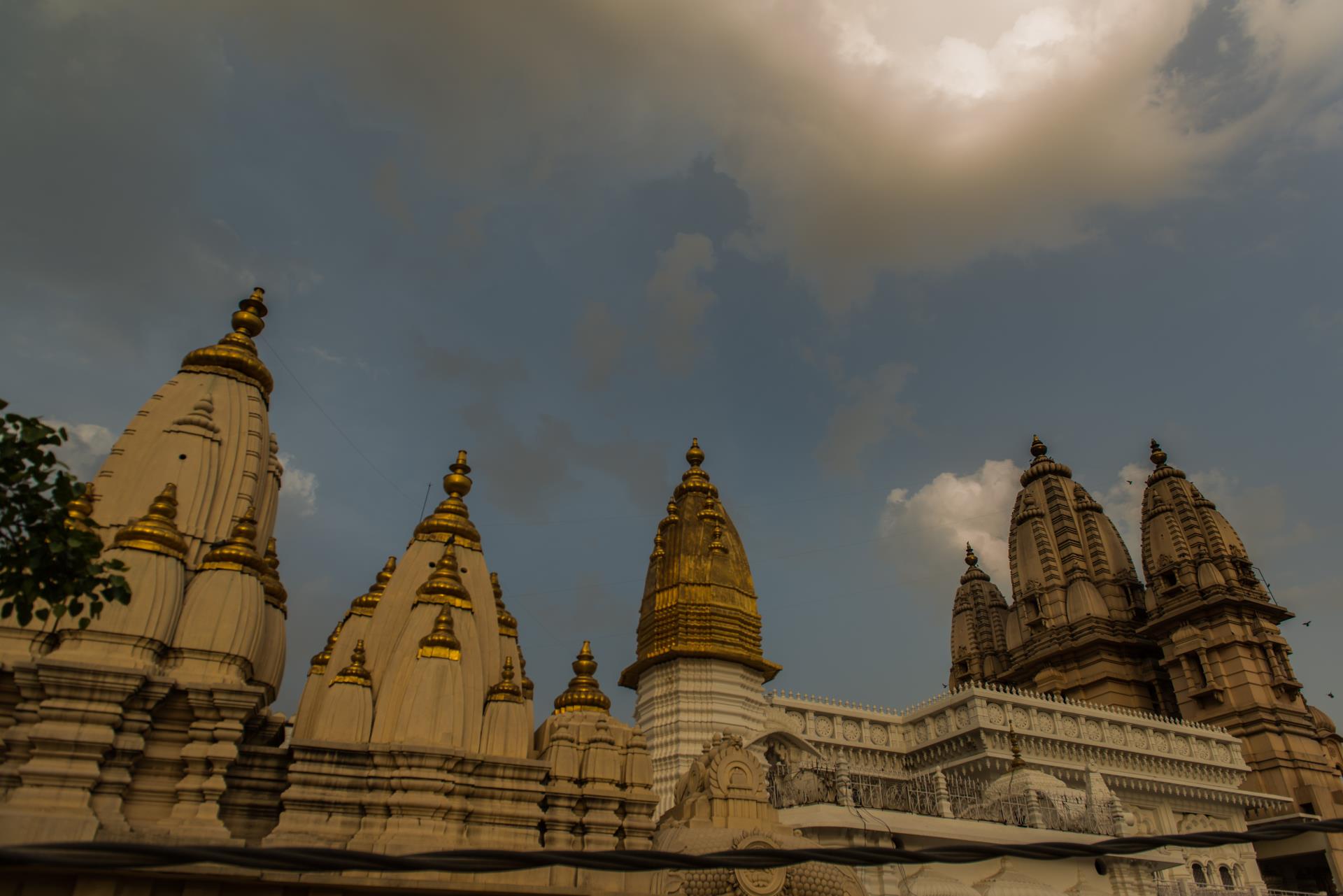
Chhatarpur Mandir
Dedicated to Goddess Katyayani, an incarnation of Goddess Durga,...
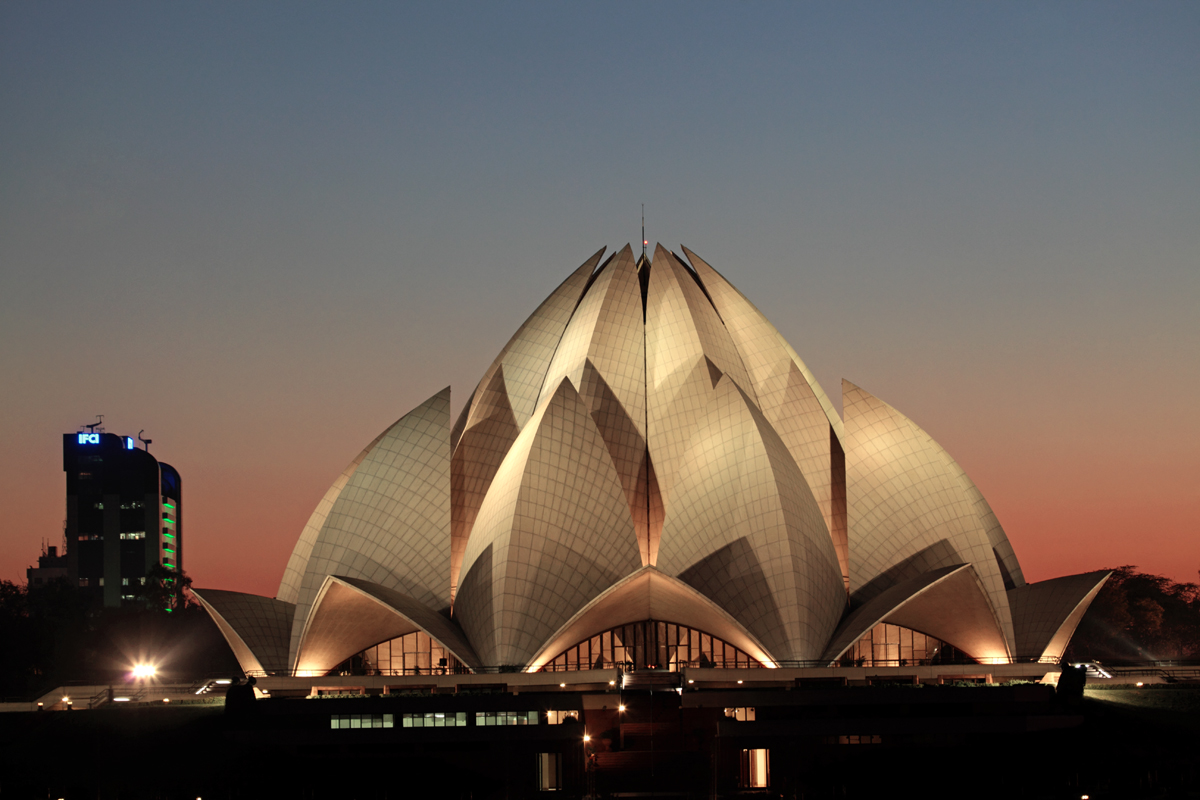
Bahai Lotus Temple
Built in the shape of a gigantic lotus, the Bahai Lotus Temple is a...
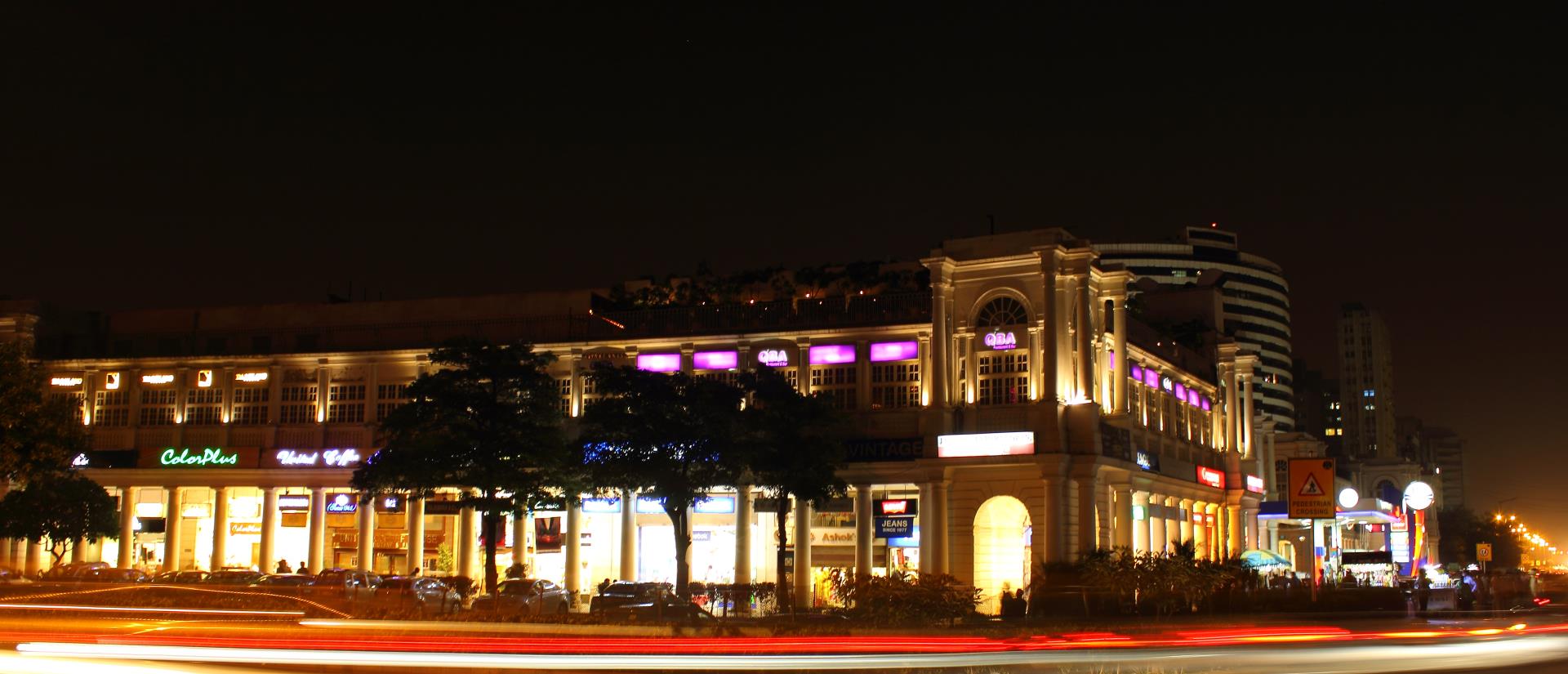
Connaught Place
The heartbeat of Delhi, Connaught Place is a heritage neighbourhood...
We use cookies to ensure that you have the best experience on our website. Continued use of the website would be assumed to be an acceptance of these conditions.
Sign up to our newsletter to receive exciting content about the tourism destinations in India.
Thank you for subscribing! Explore India with us.
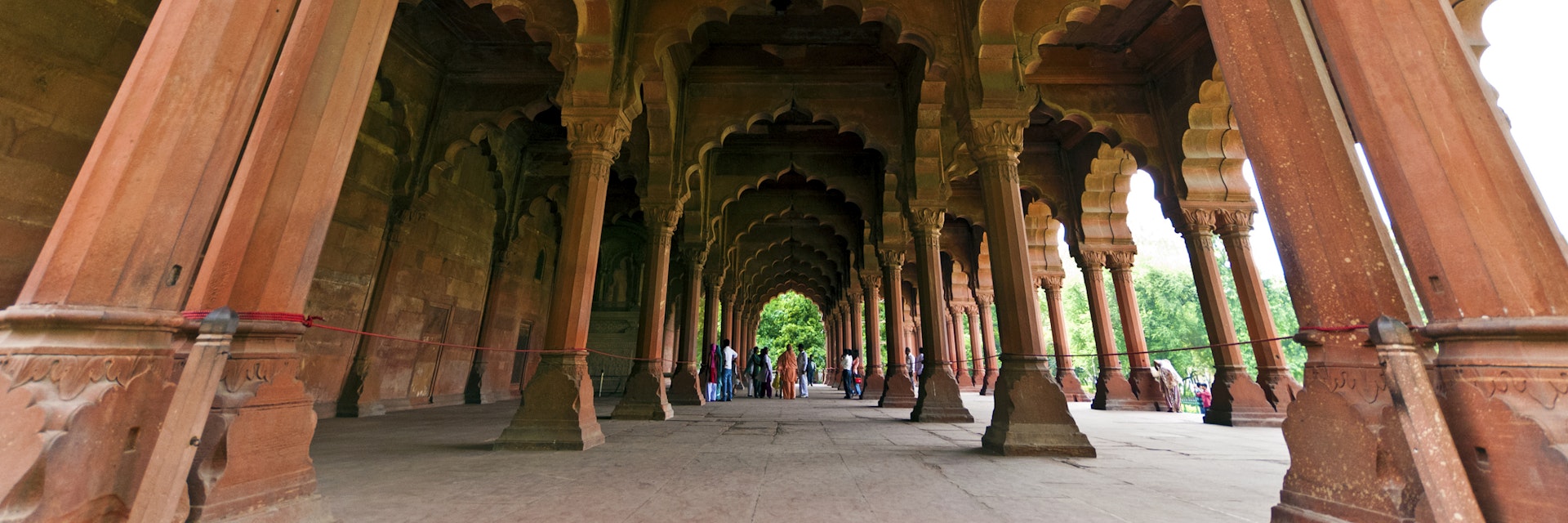
Getty Images/Lonely Planet Images
Top choice in Old Delhi (Shahjahanabad)
Founded by Emperor Shah Jahan and surrounded by a magnificent 18m-high wall, this fort took 10 years to construct (1638–48) and is rumoured to have had the decapitated bodies of prisoners built into the foundations for luck. It once overlooked the Yamuna River, which has now shrunk to some distance away. A tree-lined waterway, known as nahr-i-bihisht (river of paradise), once ran out of the fort and along Chandni Chowk, fed by the Yamuna.
Shah Jahan never took up full residence here, after his disloyal son, Aurangzeb, imprisoned him in Agra Fort.
The last Mughal emperor of Delhi, Bahadur Shah Zafar, was flushed from the Red Fort in 1857 and exiled to Burma (Myanmar) for his role in the First War of Independence. The British destroyed buildings and gardens inside the fortress walls and replaced them with barrack blocks for the colonial army.
The audio guide tour, by acclaimed company Narrowcasters, is worthwhile as it brings the site to life.
Controversially, in 2018 the government leased out the job of maintaining the fort to a private firm, the Dalmia Bharat Group, prompting accusations from conservationists that it had sold the country's heritage. Dalmia soon began wholesale renovations, including laying new red-sandstone pathways over some of the existing quartzite stone paths.
Get In Touch
https://www.delhitourism.gov.in/delhitourism/hindi/tourist_place/red_fort.jsp
Lonely Planet's must-see attractions
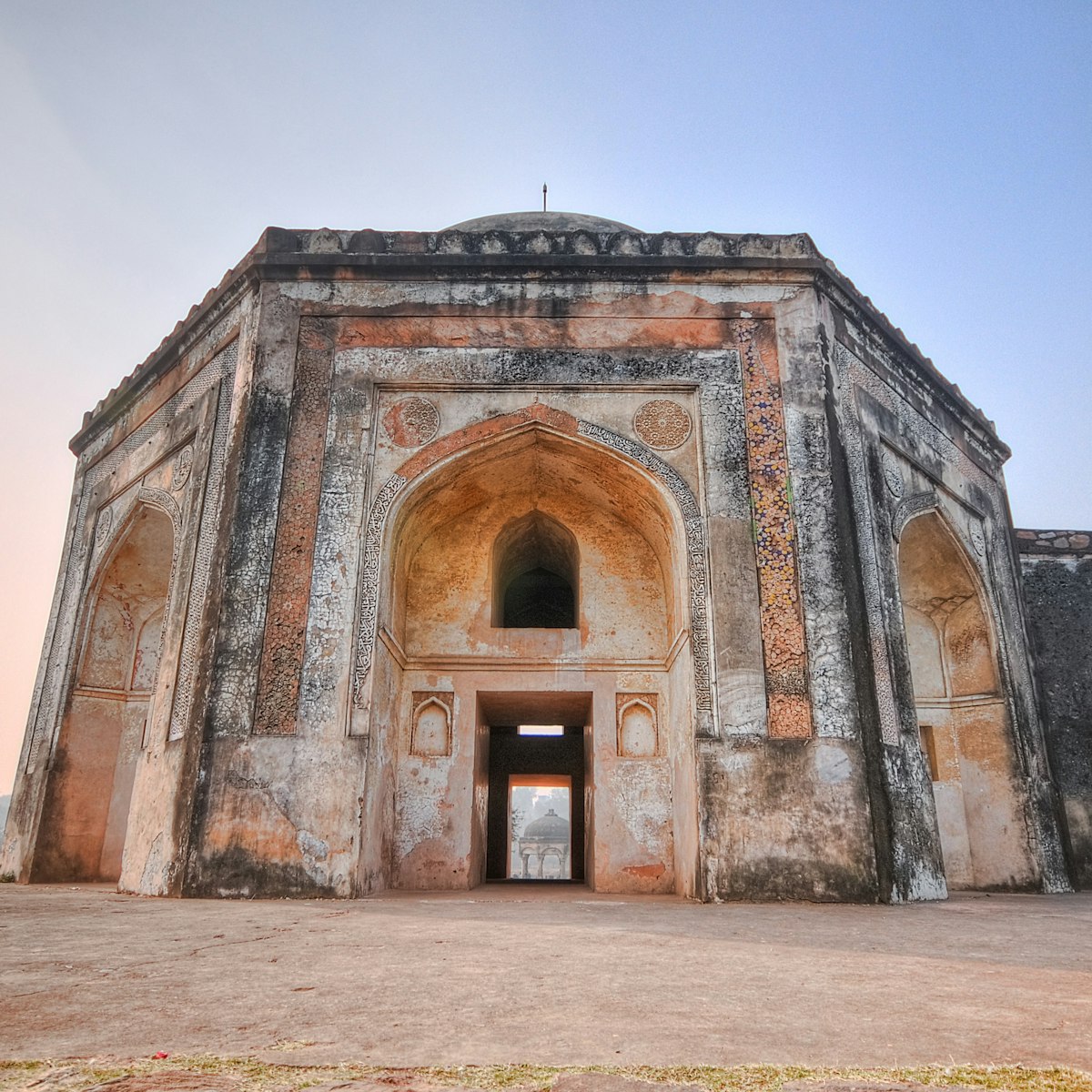
Mehrauli Archaeological Park
There are extraordinary riches scattered around Mehrauli, with more than 440 monuments – from the 10th century to the British era – dotting a forest and…
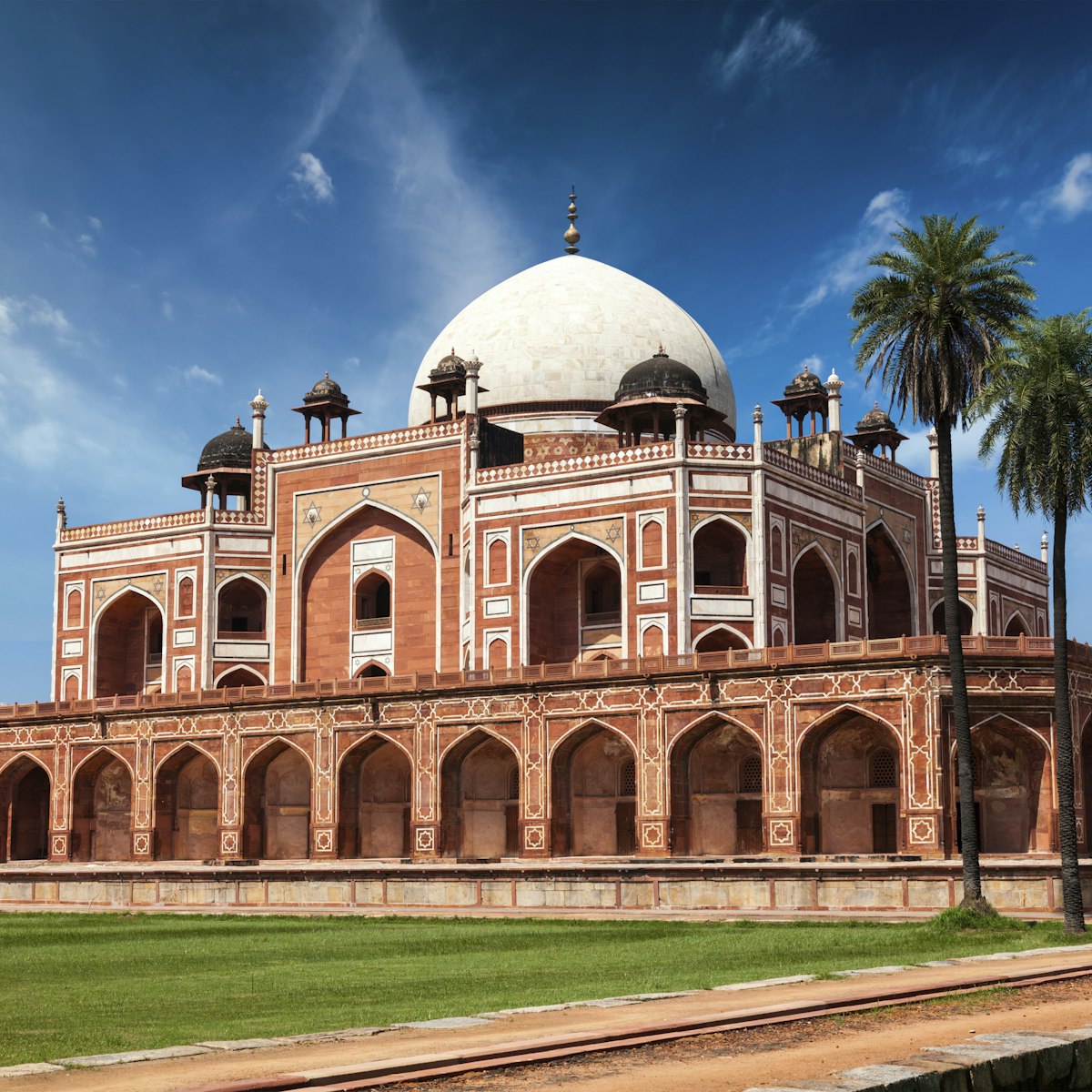
Humayun’s Tomb
Humayun’s tomb is sublimely well proportioned, seeming to float above its symmetrical gardens. It's thought to have inspired the Taj Mahal, which it…
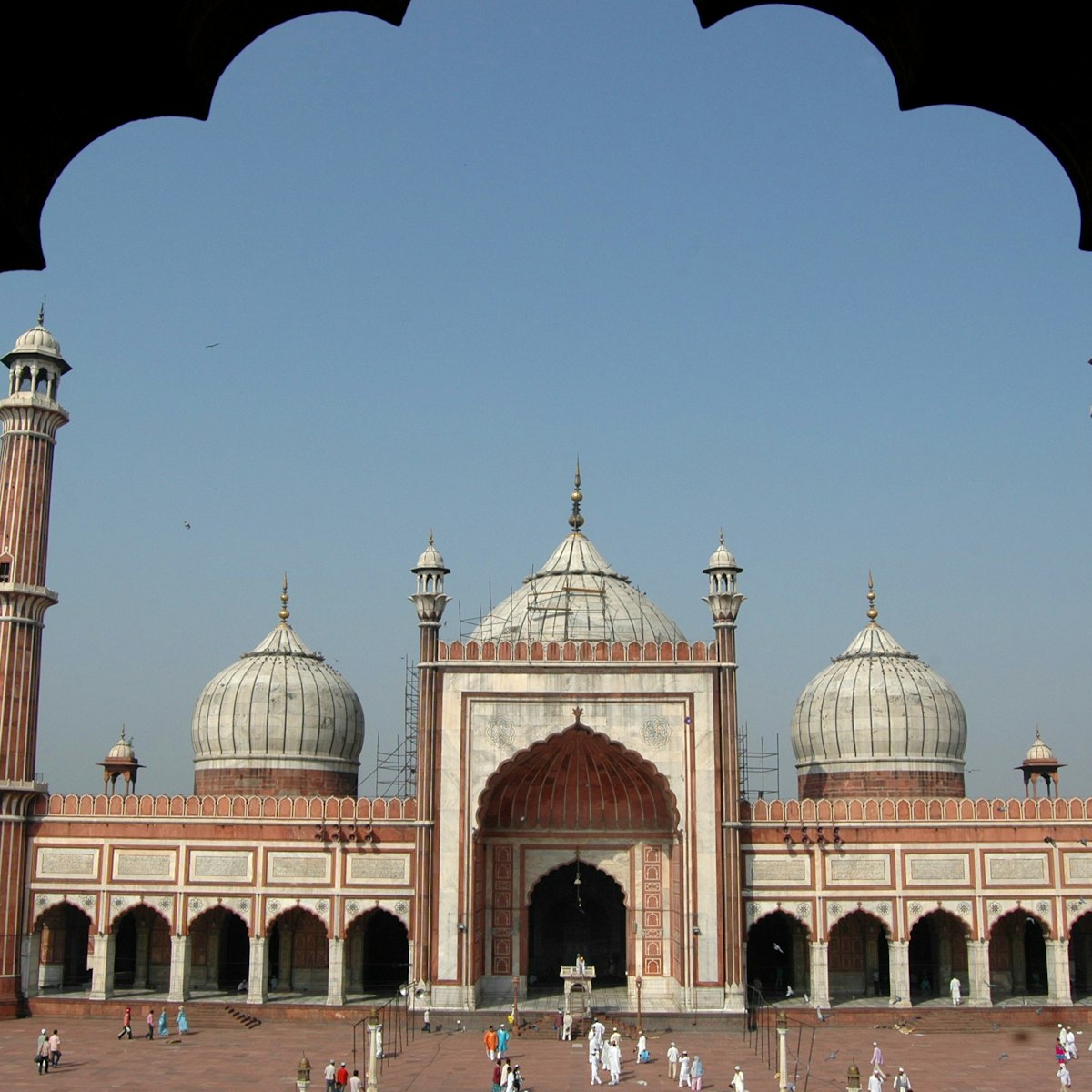
Jama Masjid
A beautiful pocket of calm at the heart of Old Delhi's mayhem, the capital's largest mosque is built on a 10m elevation. It can hold a mind-blowing 25,000…
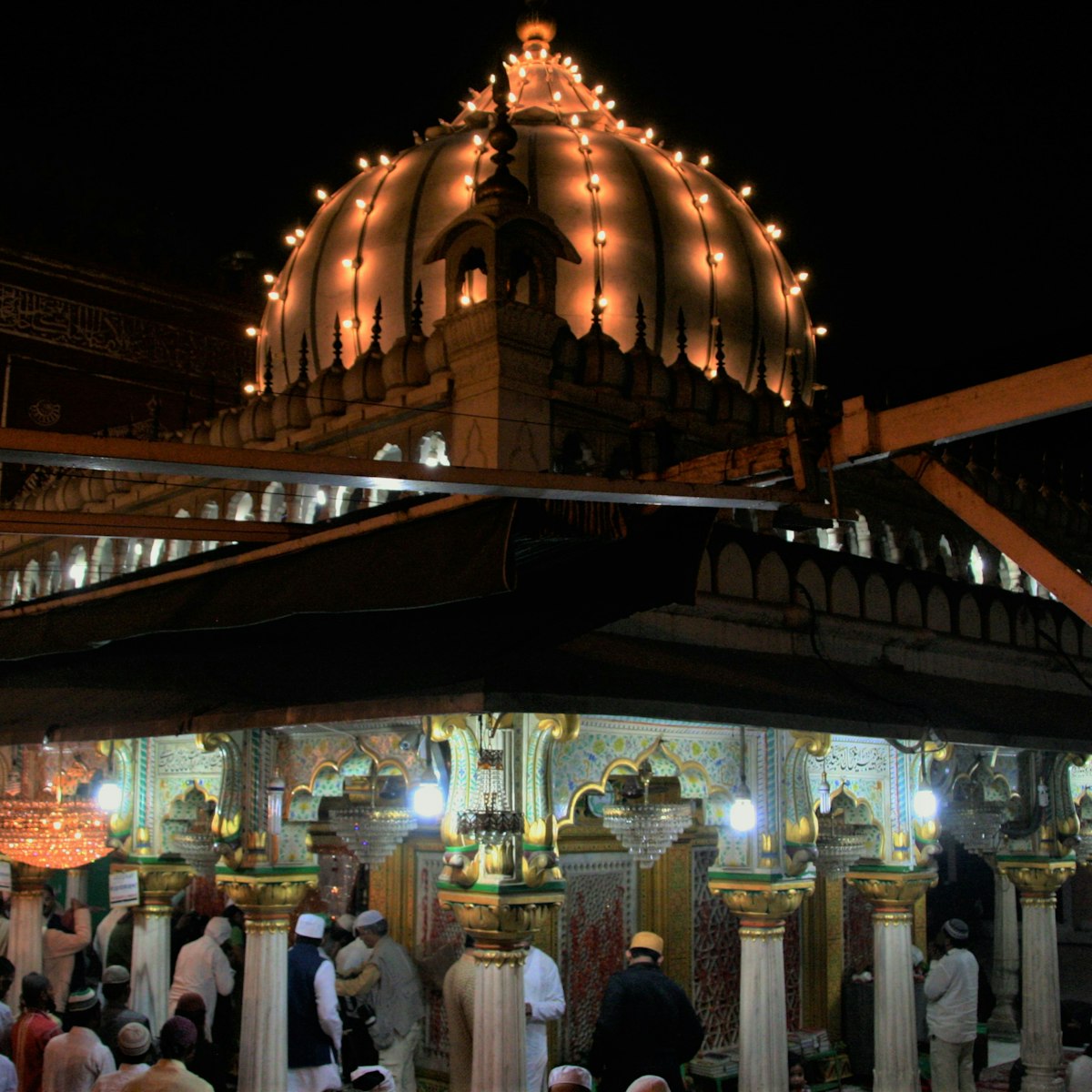
Hazrat Nizam-ud-din Dargah
Visiting the marble shrine of Muslim Sufi saint Nizam-ud-din Auliya is Delhi's most mystical, magical experience. The dargah is hidden away in a tangle of…

Qutb Minar Complex
If you only have time to visit one of Delhi's ancient ruins, make it this. The first monuments here were erected by the sultans of Mehrauli, and…

Purana Qila
Shh, whisper it quietly: this place is better than the Red Fort. Delhi's 'Old Fort' isn't as magnificent in size and grandeur, but it's far more pleasant…

Tughlaqabad
This magnificent 14th-century ruined fort, half reclaimed by jungle and gradually being encroached on by villages, was Delhi's third incarnation, built by…

Qutab Minar
The Qutab Minar that gives the complex its name is an unmissable, soaring Afghan-style victory tower and minaret, erected by sultan Qutb-ud-din in 1193 to…
Nearby Old Delhi (Shahjahanabad) attractions
1 . Naubat Khana
At the eastern end of Chatta Chowk in the Red Fort, the arched 'Drum House' once accommodated royal musicians and served as parking for royal horses and…
2 . Indian War Memorial Museum
Closed for renovations at the time of research, this museum upstairs at Naubat Khana in the Red Fort used to display ferocious-looking and fascinating…
3 . Museum on India’s Struggle for Freedom
Closed during the Red Fort renovations, this museum is housed in the large British-built barracks inside the battlements. It told the story of the…
4 . Diwan-i-Am
In the Red Fort, this arcade of sandstone columns was the hall of public audience, where the emperor greeted guests and dignitaries from a throne on the…
5 . Chatta Chowk
In the Red Fort, this imperial bazaar used to cater to royal women and glitter with silk and jewels for sale. Today's wares are rather more mundane…
6 . Moti Masjid
This small white mosque in the Red Fort was built by Aurangzeb as his private place of worship. The outer walls align with the fort walls, while the inner…
7 . Rang Mahal
So-named because its exterior was once a riot of colour, Rang Mahal in the Red Fort was the home of the emperor's chief wife. Like the other Red Fort…
8 . Khas Mahal
South of the public area of the Diwan-i-Khas in the Red Fort is the Khas Mahal, where the emperor lived and slept, shielded from prying eyes by lace-like…
The Red Fort: What To Know About Visiting The Great Palace Fort Complex Of Delhi In India
The Red Fort is one of the most iconic landmarks in India and one of the most impressive palace-fort complexes to visit today.
- The Red Fort in Delhi is a famous and historic monument that was once the residence of the Mughal emperors. It is a must-visit attraction in India.
- The Red Fort, built in the 17th century, is an impressive example of Mughal architecture and is considered a symbol of Indian independence since the end of British rule.
- Visitors to the Red Fort can explore the fort's defenses, see the royal palace, and appreciate the fusion of Mughal, Persian, Timurid, and Hindu design elements. However, certain parts of the complex, such as the mosque and public baths, are not accessible to the public.
The Red Fort speaks of a very different time in India before British rule. Old Delhi was one of the most important cities in India and was the capital of the powerful Mughal Empire with the Red Fort as the seat of power. The Red Fort is one of the most impressive historic forts to see in India rivaling forts like the famous Amber Fort / Palace in modern Rajasthan .
The Red Fort is a key attraction in historic Delhi and is a must for anyone exploring the capital of India. Today Delhi remains the capital of India and the greater urban area is one of the largest cities in the world.
The History & Significance Of The Red Fort
The Red Fort (called Lal Qila in Hindi) is located in Old Delhi and is one of the most famous and historic monuments in India. The Red Fort was once the residence of the Mughal emperors who ruled over much of India.
Previously the capital of Mughal India was the historic city of Agra (where the Mughals constructed the famous Taj Mahal ), but Emperor Shan Jahan decided to move the capital to Delhi. Emperor Shan Jahan commissioned the construction of the Red Fort on 12 May 1638.
- Built: 1638
The architect employed for the job was Ustad Ahmad Lahori (who also built the Taj Mahal). The Red Fort and the Taj Mahal are considered to be the pinnacle of Mughal architecture of the period. The Red Fort was originally red and white and was built to incorporate an older fort at the site built in 1526.
The fort was plundered in 1739 as it was attacked by the Iranians under Nader Shah (he also plundered the Peacock Throne). The Mughal Empire was left standing but gravely weakened.
After the failed Indian Rebellion of 1857 against the British, the British demolished most of the marble structures of the fort, but they left the defensive walls more or less intact.
The British then used the Red Fort as a garrison. Since the end of British rule in 1947, the Red Fort has been a symbol of Indian independence with the Prime Minister of India traditionally hosting the flag there on India's Independence Day (August 15) and then delivering a speech from its ramparts to the nation.
Next Time You're In India, Visit This Stunning Water Palace
What to expect at the red fort today.
The Red Fort has been UNESCO World Heritage Listed since 2007 and is one of the top historic attractions in Delhi. Visitors can see not only the defenses and thick fortifications of the fort but also the royal palace part of the complex (it served the duo role of fort and palace).
- Main Gate: Lahori Gate
- Wall Height: 30 meters or 99 feet
See how the private apartments are a row of pavilions connected by a water channel called the Stream of Paradise (or Nahr-i-Behist). See how the fort represents a fusion of Mughal, Persian, Timurid, and Hindu traditions.
Much of the Red Fort remains in good condition today and many of their decorative elements have been left undisturbed. The Red Fort had a strong influence on the design of later palace forts in Rajasthan, Agra, and elsewhere.
- One of the most architecturally unique palaces to discover in India is the Hawa Mahal especially the part of the palace where the princesses were kept.
Why The Mysore Palace Is The Most Impressive Palace In Southern India (& How To Visit)
What to know about visiting the red fort today.
The Red Fort is open to the public although the mosque and the Hamman (public baths) of the complex are closed to the public. The fort is large, so allow a couple of hours to explore it. There are plenty of tour guides available at the entrance for those who would like to have a deeper dive into the history of the monument.
The Red Fort is located in the heart of Old Delhi and so can be reached by public transportation (generally the subway and Uber are the most convenient).
- Opening Hours: 9:30 am to 4:30 pm
- Closed: Mondays
- Indians: Rs 35 ($0.42 USD)
- Foreigners: Rs 500 ($6 USD) - Fort only
- Foreigners: Rs 820 ($10 USD) - Fort & Museum
One of the great attractions at the Red Fort is the sound and light show . The show is performed in both English and Hindi.
The Red Fort is a very busy area and visitors are advised to be aware of pickpockets in the crowds. India is a very different country with its own unique culture and heritage. There are many questions travelers have about visiting India , but for those who do visit and make the most of it, India can be one of the most rewarding countries to visit.
- Red Fort A Walk Through...
A History Of The Red Fort, Delhi's Most Iconic Monument

‘At the stroke of the midnight hour, when the world sleeps, India will awake to life and freedom…’ This historic speech marked India’s independence from British rule and simultaneously made the Red Fort in Delhi a politically significant monument, which now acts as the setting for the independence day celebrations each year. However, the Red Fort has been a strategically important monument through the ages, due to Delhi being the capital city for a good part of the Mughal rule in India.
In 1638, the Mughal Emperor Shah Jahan moved the capital of his empire from Agra to a newly constructed city in Delhi that he called Shahjahanabad . Along with the construction of this new city, he laid the foundations of his palace, the Red Fort or Lal Qila . This massive walled citadel with red sandstone walls took nearly a decade to complete. It is considered to be better planned than the Agra Fort, as Shah Jahan learned from his experience pf living there. This fort was the seat of the Mughal empire for around 200 years, until it fell into British hands. The last Mughal Emperor Bahadur Shah Zafar was coronated here in 1837, during which time it is said that his powers did not extend beyond the boundaries of his palace.

Architecture

The entrance to the Diwan-i-‘Am has the Naubat-Khana (Drum house), from where musicians played during ceremonies. The Diwan-i-‘Am is a large hall with a nine arch façade. This hall also has an ornamented alcove where the royal throne would be placed. The Diwan-i-Khas is said to have hosted Shah Jahan’s famous peacock throne, before it was taken by the Persian Nadir Shah. Other places of note in the Red Fort are the Rang Mahal (Painted palace), the Mumtaz Mahal (which has now been converted to a Museum), the Khas Mahal (A private house with a chamber for telling beads or Tasbih Khana , a sleeping chamber or Khwabgah , a robe chamber or Tosh Khana ) and the Hammam (the ornately decorated royal bathing area, located to the north of the Diwan-i-Khas ). Mughal architecture is famous for its beautiful gardens, which is the Hayat-Baksh-Bagh (life giving garden) with its pavilions in the case of the Red Fort.

The Red Fort complex, which consists of Shah Jahan’s palace and the adjacent Salimgarh fort built in 1546 AD, is managed by the Archeological Survey of India. It was declared a UNESCO World Heritage Site in 2007.

Tips for visiting the Red Fort
Best time to visit: November to February Location: Netaji Subhash Marg Metro Station: Chandni Chowk Weekly holiday: Monday Entry fee: Rs. 10 (Indians), Rs. 250 (foreigners) Special events: Sound and light show, 6pm onwards in Hindi and English at Rs. 80 for adults and Rs. 30 for children

Since you are here, we would like to share our vision for the future of travel - and the direction Culture Trip is moving in.
Culture Trip launched in 2011 with a simple yet passionate mission: to inspire people to go beyond their boundaries and experience what makes a place, its people and its culture special and meaningful — and this is still in our DNA today. We are proud that, for more than a decade, millions like you have trusted our award-winning recommendations by people who deeply understand what makes certain places and communities so special.
Increasingly we believe the world needs more meaningful, real-life connections between curious travellers keen to explore the world in a more responsible way. That is why we have intensively curated a collection of premium small-group trips as an invitation to meet and connect with new, like-minded people for once-in-a-lifetime experiences in three categories: Culture Trips, Rail Trips and Private Trips. Our Trips are suitable for both solo travelers, couples and friends who want to explore the world together.
Culture Trips are deeply immersive 5 to 16 days itineraries, that combine authentic local experiences, exciting activities and 4-5* accommodation to look forward to at the end of each day. Our Rail Trips are our most planet-friendly itineraries that invite you to take the scenic route, relax whilst getting under the skin of a destination. Our Private Trips are fully tailored itineraries, curated by our Travel Experts specifically for you, your friends or your family.
We know that many of you worry about the environmental impact of travel and are looking for ways of expanding horizons in ways that do minimal harm - and may even bring benefits. We are committed to go as far as possible in curating our trips with care for the planet. That is why all of our trips are flightless in destination, fully carbon offset - and we have ambitious plans to be net zero in the very near future.

Simran Lal, Founder of Nicobar, On How She Launched Her Lifestyle Brand and Tips On Travelling to India

See & Do
A guide to madhya pradesh’s tiger reserves.

Guides & Tips
The best places to travel in november.


Photo Journal: 10 Photos From Jaipur's Ganguar Festival

This Homestay Could Help Save Rajasthan’s Nomadic Camel Pastoralists

Top Tips for Travelling in India

Fun-Filled Travel Experiences to Boost Your Serotonin Levels

How to spend 10 days in Madhya Pradesh, India

How To Spend a Week in Maharashtra

Film & TV
Embrace the barbie spirit by visiting the world's most colourful cities.

5 Delicious Indian Dry Bean and Lentil Recipes

The Top Things To Do And See In Jaipur
Culture trip spring sale, save up to $1,100 on our unique small-group trips limited spots..

- Post ID: 698147
- Sponsored? No
- View Payload

Majestic Red Fort: A Glimpse into Architectural Marvel of Delhi
- April 4, 2023
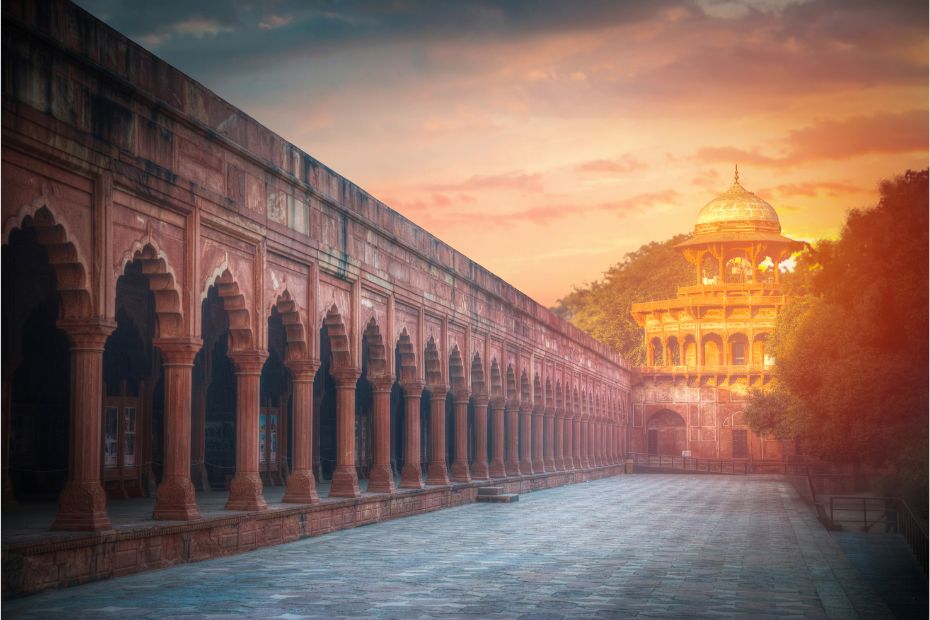
Journey through the captivating Red Fort and uncover the architectural treasures and historical significance of this Delhi landmark.
Step into the Red Fort, a world of Mughal grandeur and rich Indian history. This iconic fortress boasts towering walls and ornate structures. You’ll feel transported as you explore its vast complex.
This blog will uncover the Red Fort’s architectural masterpieces, earning it UNESCO World Heritage status. We’ll reveal its captivating history, from Emperor Shah Jahan’s vision to India’s independence struggle. Plus, we’ll share essential visitor tips for an unforgettable experience.
Ready for an incredible journey? Lace up your walking shoes and grab your camera. Let’s dive into the Red Fort, Delhi’s iconic architectural brilliance and a cultural heritage symbol.
A Walk Through the Red Fort’s Historic Halls
Visiting the Red Fort is like stepping back in time as you wander through its majestic halls and palaces. Here, we provide an in-depth exploration of the historic halls within the Red Fort complex:
Diwan-i-Aam : The Hall of Public Audiences
Diwan-i-Aam is a grand, open hall where Emperor Shah Jahan addressed his subjects. This space is characterized by:
- A large, rectangular chamber adorned with red sandstone
- Beautiful arches and columns that support a flat roof
- An intricately designed throne for the emperor, positioned on a raised platform
- The presence of numerous balconies, where the courtiers and nobles stood
- A garden area surrounds the hall, adding to its aesthetic appeal
While exploring Diwan-i-Aam, make sure to:
- Observe the detailed carvings on the columns and arches
- Imagine the emperor seated on his throne, listening to the grievances of his people
- Take a stroll in the garden to appreciate the Mughal love for landscaping
Diwan-i-Khas : The Hall of Private Audiences
Diwan-i-Khas served as a private audience chamber for the emperor. It is distinguished by:
- An exquisitely decorated interior featuring white marble and intricate inlays
- A famous inscription reads, “If there is a paradise on earth, it is this, it is this, it is this”
- The legendary Peacock Throne, which was placed here before being taken by the Persians
- A central pillar with a circular platform for the emperor’s seat
- Delicately carved marble screens that offered privacy
As you tour the Diwan-i-Khas, be sure to:
- Marvel at the craftsmanship of the marble inlays and carvings
- Reflect on the opulence of the Mughal court during its heyday
- Ponder the significance of the Peacock Throne and its disappearance
Rang Mahal : The Palace of Colors
Rang Mahal was the residence of the emperor’s wives and royal women. Key features of this palace include:
- Lavish chambers adorned with colorful paintings, gold, and precious stones
- A central marble pool, known as the “House of Waters,” kept the palace cool
- A finely crafted, gilded ceiling that resembles a shimmering night sky
- An exclusive entrance for the emperor, separate from the main entrance
While visiting Rang Mahal:
- Marvel the vibrant colors and intricate details of the interior design
- Appreciate the innovative cooling system of the central marble pool
- Consider the private lives of the royal women who once resided here
Khas Mahal : The Private Palace
Khas Mahal functioned as the emperor’s private residence. Elements of this palace include:
- Exquisite white marble architecture with gold and blue inlays
- Three sections: a sleeping chamber, a sitting room, and a wardrobe area
- Delicate marble screens offer privacy while allowing natural light to filter through
- Panoramic views of the Yamuna River from the palace’s eastern side
During your time at Khas Mahal:
- Esteem the splendid combination of marble, gold, and blue inlays
- Imagine the emperor’s daily life within these private quarters
- Enjoy the views of the Yamuna River from the palace’s vantage point
Moti Masjid : The Pearl Mosque
Moti Masjid is a small, private mosque built for the emperor’s personal use. Distinctive features of this serene structure include:
- Elegant white marble construction that gives it a pearl-like appearance
- Three domes adorn the roof, adding to its architectural beauty
- A prayer hall with a façade of seven arched openings, creating a sense of harmony
- A courtyard with a small ablution pool for ritual cleansing before prayers
- Minimalistic design, emphasizing the spiritual purpose of the mosque
While visiting Moti Masjid, make sure to:
- Appreciate the simplicity and elegance of the white marble structure
- Contemplate the spiritual life of the emperor and his devotion to prayer
- Take a moment to soak in the serene atmosphere within the mosque’s confines
In summary, a visit to the Red Fort offers a fascinating journey through its historic halls, each with its unique character and purpose. From the grandeur of Diwan-i-Aam to the luxury of Diwan-i-Khas, the vibrant Rang Mahal to the intimate Khas Mahal, and the serene Moti Masjid, you’ll be immersed in the Mughal world of art, architecture, and royal life. As you explore these extraordinary spaces, take the time to appreciate the intricate craftsmanship, rich history, and stories unfolding within their walls. This once-in-a-lifetime experience will leave you with a profound understanding of India’s past and the legacy of the Mughal Empire.
The Architecture and Design of the Red Fort
Explore the fascinating architecture and design of the Red Fort, a stunning testament to Mughal artistry and engineering. The fort’s intricate design, key structures, and materials used in its construction are all essential aspects of this architectural marvel.
Mughal Architecture and Influences : The Red Fort exemplifies Mughal architecture, characterized by:
- Grand scale: The fort’s immense size reflects the grandeur of the Mughal Empire.
- Symmetry: A balanced, harmonious design is evident throughout the complex.
- Ornate decoration: Detailed carvings, inlays, and calligraphy adorn various structures.
- Gardens: Mughals were known for their love of gardens, which you can witness at the fort.
- Domes and arches: These iconic features are prominent in the Red Fort’s design.
Major Structures within the Complex : The Red Fort is home to several significant structures, including:
- Lahori Gate: The main entrance has intricate carvings and an impressive façade.
- Delhi Gate: Another entrance showcasing beautiful geometric patterns and floral motifs.
- Chhatta Chowk: A bustling marketplace where traders once sold luxurious goods.
- Naubat Khana: A ceremonial music pavilion where musicians played for the emperor.
- Diwan-i-Aam: The emperor’s public audience hall, with an impressive throne alcove.
- Diwan-i-Khas: A private audience chamber featuring a dazzling interior and the legendary Peacock Throne.
- Rang Mahal: A royal women’s palace decorated with colorful paintings and a central marble pool.
- Khas Mahal: The emperor’s private quarters, characterized by lavish white marble and inlays.
- Moti Masjid: A serene, white marble mosque for the emperor’s personal use.
Materials Used and Conservation Efforts: The Red Fort is primarily constructed from red sandstone, which gives the fort its distinctive color. Other materials used include:
- White marble: Featured in several structures, such as the Diwan-i-Khas and Moti Masjid.
- Semi-precious stones: Used for intricate inlay work and to embellish various interiors.
- Gold and silver: Employed decorative elements to heighten the fort’s opulence.
Preserving the Red Fort’s architectural integrity is a priority for conservationists. Efforts include:
- Structural repairs: Addressing wear and tear, such as cracks and damaged carvings.
- Restoration: Reviving the original splendor of the fort’s art, inlays, and paintings.
- Environmental protection: Implementing measures to shield the fort from pollution and weathering.
In conclusion, the Red Fort’s architecture vividly represents Mughal artistry and engineering prowess. Its harmonious design, impressive structures, and the materials used in its construction showcase the empire’s grandeur. Furthermore, ongoing conservation efforts ensure that the fort remains a testament to India’s rich cultural heritage for future generations to admire.
Red Fort Sound and Light Show
Unveil the enchanting world of the Red Fort through its mesmerizing Sound and Light Show. This immersive experience brings the fort’s history to life in vivid detail, captivating your senses with a blend of technological marvels and vivid storytelling.
The show’s specifics: During the Sound and Light Show, you’ll witness various key events and periods of Indian history. The performance features:
- A dramatic recreation of Mughal battles and court life
- The rise and fall of Mughal emperors, including Shah Jahan and Aurangzeb
- The British occupation and the subsequent fight for Indian independence
- The story of how the Red Fort became an enduring symbol of India’s rich heritage
Timings and tickets: To catch the show, note that there are two performances each evening. The English version typically starts at 7:30 PM during summer and 6:30 PM in winter. The Hindi version follows, commencing around 9:00 PM in summer and 8:00 PM in winter. However, these timings may change, so it’s best to confirm the schedule beforehand.
As for the tickets, you can purchase them at the Red Fort’s ticket counter or via online platforms. The prices vary, with Indian nationals paying INR 60 and foreign visitors charged INR 200. Child rates are also available. Seating operates on a first-come, first-served basis, so arrive early to secure prime seating.
Gaining a deeper understanding: Attending the Red Fort Sound and Light Show will give you a more profound appreciation for India’s rich and diverse history. The show’s powerful visual and audio components transport you back to the Mughal era, allowing you to envision the lives of the emperors and the events that shaped the fort’s legacy.
Furthermore, the performance emphasizes the fort’s significance as an iconic symbol of India’s cultural and historical identity. As the colorful lights illuminate the towering sandstone walls and the sounds of battle echo through the complex, you’ll be captivated by the stories unfolding before you.
How to Visit the Red Fort
Are you planning a visit to the Red Fort? Here’s all you need to know about location, accessibility, entry fees, timings, the best time to visit, and nearby attractions and eateries.
Location and Accessibility: The Red Fort is located in Old Delhi, near the banks of the Yamuna River. To reach the fort:
- Metro: Use the Delhi Metro’s Violet Line and disembark at Lal Qila station.
- Auto-rickshaw: Hire an auto-rickshaw from anywhere in Delhi.
- Taxi: Book a cab or use a ride-sharing app.
Entry Fees and Timings: The Red Fort is open to visitors from Tuesday to Sunday, 7:00 AM to 5:30 PM. The fort is closed on Mondays. Entry fees are:
- Indian nationals: INR 35 per person
- Foreign citizens: INR 550 per person
- Children below 15 years: Free entry
Best Time to Visit: The ideal time to visit the Red Fort is during the cooler months, from October to March. During this period:
- Weather: Pleasant temperatures make exploring the expansive fort more comfortable.
- Festivals: Experience the cultural extravaganza of events like Diwali and Republic Day.
Nearby Attractions : After visiting the Red Fort, consider exploring nearby attractions, such as:
- Jama Masjid: India’s largest mosque with impressive architecture and a panoramic city view.
- Chandni Chowk: A bustling market that offers a sensory feast and an authentic taste of Old Delhi.
- Humayun’s Tomb: A UNESCO World Heritage Site and a remarkable example of Mughal architecture.
- Raj Ghat: A memorial dedicated to Mahatma Gandhi, marking the spot of his cremation.
Places to Eat : Savor the local flavors at nearby eateries, including:
- Karim’s: A historic restaurant serving mouthwatering Mughlai cuisine.
- Paranthe Wali Gali: A famous street offering a variety of stuffed parathas.
- Kuremal Mohan Lal Kulfi Wale: A renowned dessert shop for traditional Indian ice cream (kulfi).
- Aloo Tikki Wala: A popular street food joint for delicious aloo tikki and chaat.
Frequently asked questions about Red Fort
What is the history of the Red Fort?
The Red Fort, also known as Lal Qila, was the main residence of Mughal emperors from 1648 until 1857. Built during the reign of Emperor Shah Jahan, the fort witnessed various historical events and changes in power. Post-independence, it became a symbol of India’s heritage and freedom struggle.
Who built the Red Fort, and when was it built?
Emperor Shah Jahan commissioned the construction of the Red Fort in 1638. The fort was completed in 1648, becoming the center of Mughal power and an architectural marvel of its time.
What is the significance of the Red Fort in Indian history?
The Red Fort is significant in Indian history as the primary residence of Mughal emperors and a symbol of their grandeur. After India’s independence, the fort became a symbol of the nation’s freedom struggle and is the site of the Prime Minister’s annual Independence Day address.
What are the main structures within the Red Fort complex?
Major structures within the Red Fort complex include Lahori Gate, Delhi Gate, Chhatta Chowk, Naubat Khana, Diwan-i-Aam, Diwan-i-Khas, Rang Mahal, Khas Mahal, and Moti Masjid.
What is the architectural style of the Red Fort?
The Red Fort showcases Mughal architecture, characterized by grand scale, symmetry, ornate decoration, gardens, and iconic features such as domes and arches.
What materials were used in the construction of the Red Fort?
Red sandstone is the primary material used to construct the Red Fort. White marble, semi-precious stones, gold, and silver were used for various structures and decorative elements.
What are the visiting hours and entry fees for the Red Fort?
The Red Fort is open from Tuesday to Sunday, 7:00 AM to 5:30 PM. Entry fees are INR 35 for Indian nationals, INR 550 for foreign nationals, and free for children below 15 years.
What is the best time of year to visit the Red Fort?
The ideal time to visit the Red Fort is during the cooler months, from October to March, when temperatures are pleasant and various cultural events and festivals occur.
Are there any special events or shows at the Red Fort?
The Red Fort hosts a captivating Sound and Light Show in the evenings, which uses powerful sound effects and colorful lights to narrate the fort’s history and the stories of its emperors.
What are some nearby attractions and places to eat near the Red Fort?
Nearby attractions include Jama Masjid, Chandni Chowk, Humayun’s Tomb, and Raj Ghat. Karim’s, Paranthe Wali Gali, Kuremal Mohan Lal Kulfi Wale, and Aloo Tikki Wala are popular eateries.
How can I reach the Red Fort using public transportation?
The Red Fort is accessible via Delhi Metro’s Violet Line (Lal Qila station), auto-rickshaw, or taxi.
Are there guided tours available at the Red Fort?
Yes, guided tours are available at the Red Fort, providing visitors with in-depth information about the fort’s history, architecture, and significance.
Related Posts
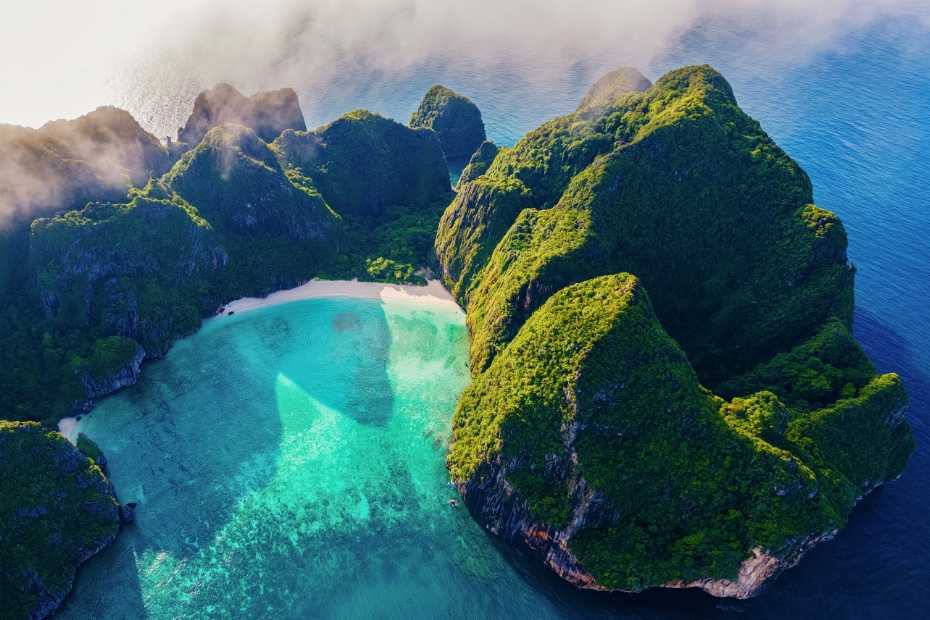
Discover Thailand’s Hidden Gems
Al-kharj: a blend of ancient wells and modern charm.
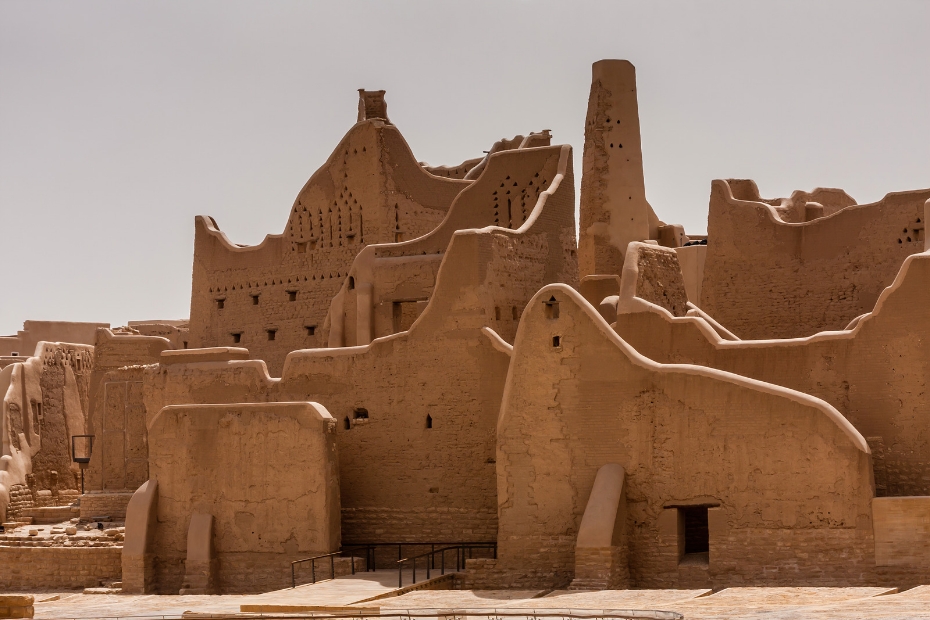
Discovering Diriyah: The Jewel of Saudi Arabia

The colossal Red Fort in Delhi was the home of the formidable Mughal emperors for around 200 years until the British took over it in 1857. The fort is not just a symbol of the popular grandeur of the Mughal era, but it has withstood the trials of turbulent times, especially during India’s most historical events that shaped the foundation of the country.
History of Red Fort
However, despite having elaborate and grand illustrations in the early years, the shine and glory of the Red Fort eventually faded when Shah Jahan fell ill and had to go back to Agra to recuperate. Since 1658, Shah Jahan’s son Aurangzeb, who was known to be power hungry, took the charge of the fort and kept his father imprisoned at Agra Fort for over 8 years until he died. The opulence of the Red Fort and the fortunes of the royal family started diminishing with Aurangzeb ruling the last phase of his reign which was bristled with uncertainty, unfaithfulness and treachery. Persian ruler Nadir Shah attacked the fort in 1739 and looted several valuables, including the Peacock Throne and the Kohinoor diamond. In 1752, the fort belonged to the Maratha kings who defeated the Mughals in a battle. The Marathas had to melt down the silver ceiling of the Diwan-e-Khaas hall in order to raise funds to save the capital from the attack of the Afghan invaders under the leadership of Ahamd Shah Durrani. In 1857, the Britishers made the Red Fort their army base and looted further valuables. In 1947, after gaining independence, the Red Fort was chosen as the main site for public celebration.
How To Reach
The distance between Indira Gandhi International Airport in New Delhi and Red Fort is around 20.5km. You can take an app cab or taxi from the airport that would take you to the fort in around 1 hour via Sardar Patel Marg. You can also take the bus services from the airport to the Red Fort which will take around 1 hour and 15 minutes.
Delhi Metro is another convenient conveyance to reach the fort from the airport. You have to ride in the Orange Line of the Metro. While app cabs will charge you around Rs 500 to the fort from airport, ordinary taxis will charge around Rs 600 or more. Bus fares will be around Rs 30-Rs40, so will the Metro fare.
Best Time To Visit
The Red Fort remains open in all seasons, every day from 9.30 am to 4.30 pm. However, it is difficult to roam around the fort if you visit Delhi during summertime. The scorching heat of the national capital is quite notorious and despite enough preventive measures, one might fall sick. Therefore, the best time to visit the place is anytime from October to February.
The weather this time remains pleasant. Neither do you need to carry warm clothes nor umbrellas to beat the sun. Overall it is a good time as the national capital is decked up owing to various festivals this time, especially Dussehra and Diwali.
Other Essential Information
Location: The Red Fort is based on a 255-acre of land near the western bank of the Yamuna. The Chandni Chowk of Old Delhi ends at the vicinity of Red Fort. The business district of Connaught Place is located a few miles north of the fort.
Price: The entry ticket price of Red Fort is Rd 35 for native Indian citizens. For foreigners, the tickets are priced at Rs 500. If you opt for the light and sound show at the Red Fort, it will cost you Rs 60 per adult person, while for children, it is Rs 20 per head. During the weekend, the ticket prices vary a bit. For adults, it is Rs 80 and Rs 30 for kids.
The architecture of Red Fort
Light and sound show.
The show also describes the fort’s significance during the Indian freedom movement. Some portion of the speeches of freedom fighter Mahatma Gandhi and Chandra Sekhar Azad has been used in the audio clippings. The show ends with a speech by the first Prime Minister of India, Jawaharlal Nehru and finally playing of the National Anthem. The shows are presented in English and Hindi. The Hindi show starts around 6 pm from November to January, while the English show begins at 7.30 pm. Each show begins around half an hour later as the season changes between September and August.
Tips For Visiting Red Fort
1. The fort opens at 9.30 am every day, except on Mondays. So reach early to the site to avoid the crowd and have ample time to visit all the nooks and corners of this huge monument. 2. If you are visiting the place during summer, try to equip yourself with a water bottle, an umbrella and a hand-held fan as the summer in Delhi can be really scorching and unbearable, even at the start of the day. 3. Generally, a tourist does not need a guide at the Red Fort as the site has sufficient markings and signs with detailed explanations about the particular architecture you are visiting. However, if you still feel you need to hire a guide for a better understanding, you should go for those registered with the government. 4. If you are visiting the fort, there is no point in missing out on the light and sound show. So arrange your timing at the site accordingly so that you can get the best of your visit.
Tourism Board Alliances
Red fort faqs, why red fort was built, is red fort and agra fort same, why is red fort famous, what is inside red fort, why red fort is red in colour, what is the present condition of the red fort, who owns red fort, why flag is hoisted at red fort, more things to do in delhi, delhi tourism, popular related attractions.
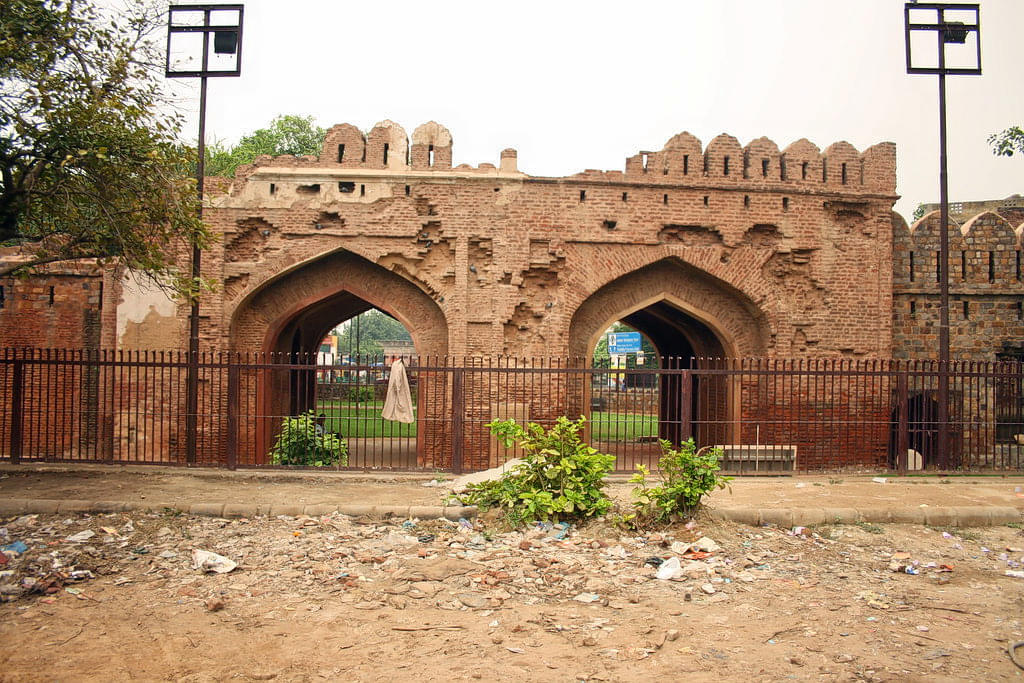
More Delhi Attractions
Popular related destinations.

Why Choose Thrillophilia
Travel guides, best domestic packages, best international packages, domestic honeymoon packages, international honeymoon packages, places to visit in india, international places to visit, international things to do, popular on thrillophilia.
₹ 4,771 onwards
Label : Top Attraction
Tags : Forts & Palaces
Timings : 7:00 AM - 5:30 PM, Except on Mondays
Time Required : 2-3 hours
Entry Fee : Indian Citizens, citizens of SAARC and BIMSTEC nations: INR 10, Other foreigners: INR 250, No fees for children below the age of 15
Built in : 1639
Planning a Trip? Ask Your Question
Lal Quila, Delhi Overview
The Red Fort is a historical fortification in the old Delhi area. Shah Jahan constructed it in the year 1639 as a result of a capital shift from Agra to Delhi. Used as the main residence of the emperors of the Mughal dynasty, this imposing piece of architecture derives its name from its impregnable red sandstone walls. In addition to accommodating the emperors and their households, it was the ceremonial and political centre of the Mughal state and the setting for events critically impacting the region. Today, this monument is home to several museums that have an assortment of precious artefacts on display. Every year, the Indian Prime Minister unfurls the national flag here on the Independence Day.
Formerly known as Quila-e-Mubarak or the Blessed Fort, the Red Fort lies along the banks of the river Yamuna, whose waters fed the moats surrounding the fort. It was a part of the medieval city of Shahjahanabad, popularly known today as 'Old Delhi'. The entire fort complex is said to represent the architectural creativity and brilliance of Mughal architecture. With so much history and heritage associated with it, the Red Fort is one of the most popular monuments in India and a major tourist attraction in Delhi. It became a UNESCO world heritage site in 2007. The Archaeological Survey of India is at present responsible for the security and preservation of this magnificent monument.
Read More on Lal Quila
Architecture of red fort, history of red fort, light and sound show, best time to visit red fort, tips for visiting red fort, how to reach red fort, delhi travel packages.
Compare quotes from upto 3 travel agents for free
Short Break to Delhi and Agra
4 night 5 days shimla manali package, splendid delhi agra jaipur package, dharamshala dalhousie honeymoon package, romantic kullu manali shimla volvo tour package, spirited kasol and manali trip, top hotel collections.

Best Hotels
Hyatt Hotels
Cheap Hotels
South Delhi Hotels
Top Hotels Near Lal Quila
8.7 (3863 reviews)
10 kms
₹ 10,500 onwards
8.5 (3478 reviews)
5 kms
₹ 10,080 onwards
5.6 (3255 reviews)
4 kms
₹ 6,999 onwards
8.0 (3016 reviews)
3 kms
₹ 2,100 onwards
7.8 (2914 reviews)
₹ 1,800 onwards
8.1 (2834 reviews)
₹ 3,240 onwards
Lal Quila Reviews
Saanvi Patel
Soumita Ghosh
Have a Question on Lal Quila?

Other Top Ranking Places In Delhi
Nearby places.

Explore Related Destinations

Related Posts

Fairs & Festivals
Republic Day of India 2024 - All You Need to Know

Food & Drink
Paranthe Wali Gali - What Not to Miss While Heading Out for the Heavenly Sunday Brunch!

Sightseeing
Sunder Nursery, Delhi

Experiences
Majnu ka Tilla - Little Tibet in Delhi

Water Parks In Delhi

Chor Bazaar Delhi - Everything You Should Know About This Thieves Market

Hill Stations
Best Hill Stations near Delhi

Art & Culture
Amar Jawan Jyoti - The Eternal Flame!

14 Malls in Delhi For Shopping, Food, Movies and More!

Best Restaurants in Delhi: These Restaurants in Delhi Are A Must On Your Next Vacay!

13 Amusement Parks in Delhi NCR for a Fun Filled Time

26 Cafes in CP You Just Connaught Miss
Similar Places

Get the best offers on Travel Packages
Compare package quotes from top travel agents
Compare upto 3 quotes for free
- India (+91)
*Final prices will be shared by our partner agents based on your requirements.
Log in to your account
Welcome to holidify.
Forget Password?
Share this page
Travel Pleasing
Tourist guide to visit the red fort of delhi.
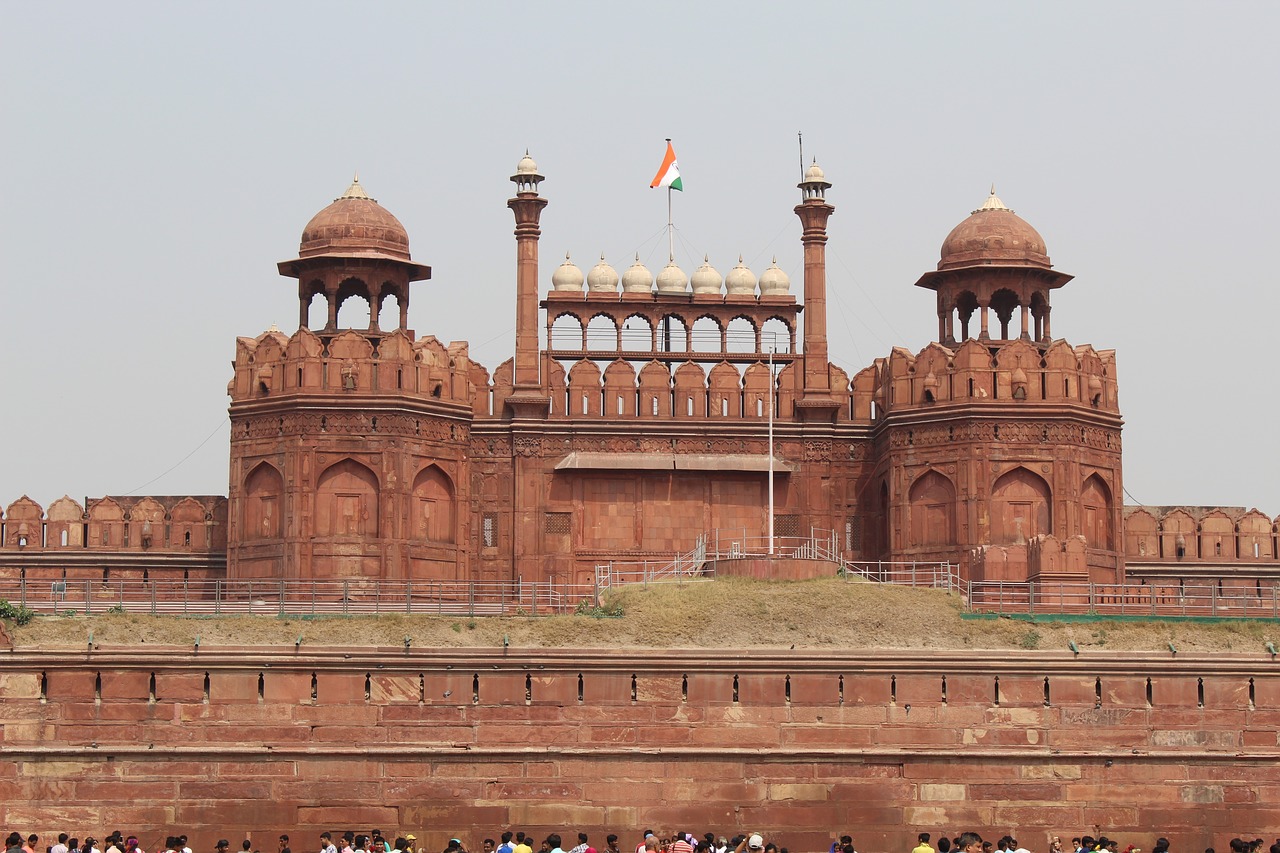
Declared a UNESCO World Heritage Site in the year 2007, the Red Fort of Delhi is one of the many samples of power that the length and width of your domains left the Mongol Emperor Shah Jahan, much more known for being the architect of the Taj Mahal. Red Fort is the important monument of India which attracts tourist across the world.
It is true, comparisons were always odious, but we should not underestimate the beauty of this enormous Palace complex whose design, as can be read in their own walls, is inspired by the paradise described in the Quran.
Red Fort is also named as Lal Quila. Red granite walls that surround it inside many buildings that are authentic jewels of Hindu architecture-Mongol, with details such as massive arches of white marble or exquisite inlaid with semi-precious stones. Kohinoor is the largest diamond in the world which is the adorning crown of England’s Queen. This diamond is the important part of royal throne of Shah Jahan located in Diwan-i-Khaas.
Also, their extensive and well-tended gardens become an ideal place where you can sit and decide which flag visit below, or simply to observe the bustle prevailing around us.
Some of the most outstanding buildings are the House of the Tabor, the Pearl Mosque, and the flag of the imperial. Nor can we lose sight of the open spaces, such as the Diwan-I-Aam or courtyard dedicated to the public hearings, where there is a throne, which they say is a copy of one of the Solomon Islands.
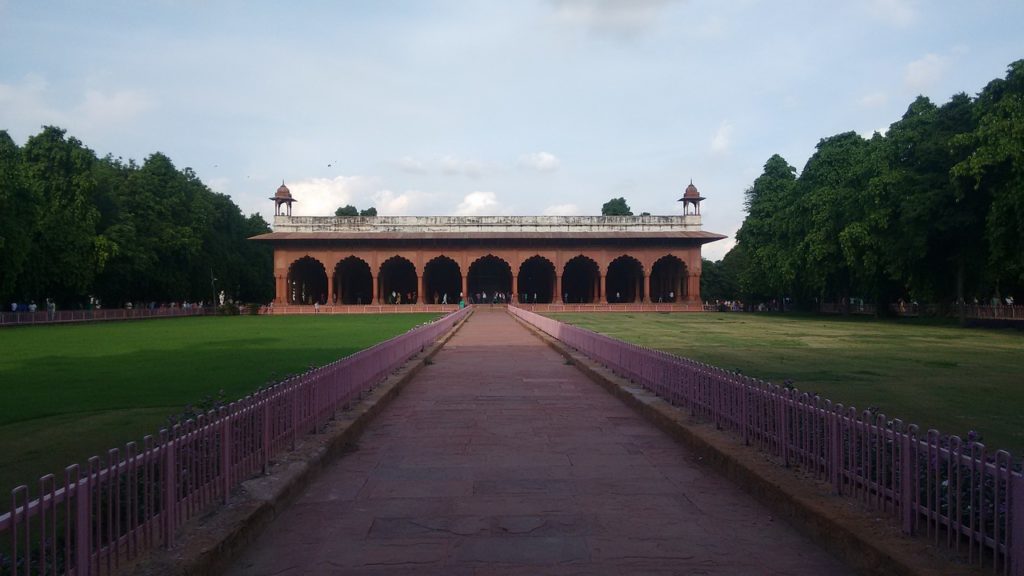
The Red Fort is located in the area of Old Delhi, compared to the Great Mosque Jama Masjid and very close to the Delhi backpacker destination Pahar Ganj.
Structures at Red Fort
- The Diwan-i-Khas or the Hall of Private Audience
- The Diwan-i-Aam or the Hall of Public Audience
- The Rang Mahal or Palace of Colours
- The Khas Mahal
- Moti Masjid or Pearl Mosque
- Lahore Gate
- Hayat Bakhsh Bagh
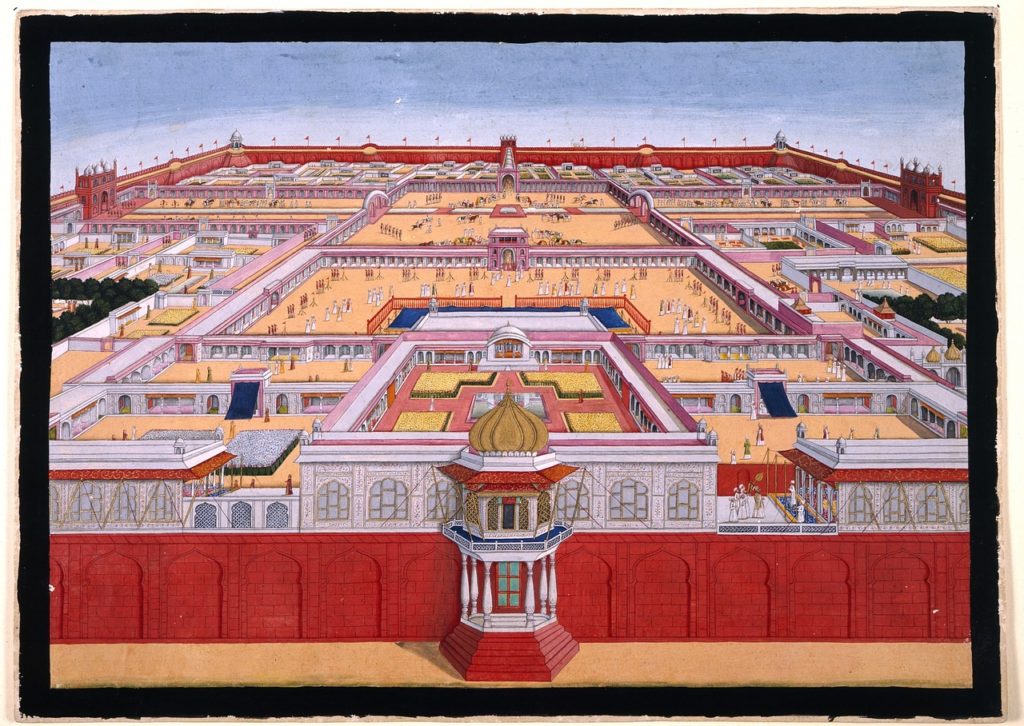
More Interesting Information of Red Fort Delhi
- India and its capital Delhi becomes a true orchard of places to visit and of great historical interest for tourists.
- The country each year millions of visitors who succumb to their cultural legacy, where the Mughal architecture stands out from the rest.
- The Red Fort of Delhi is one of the great exponents of Mughal architecture and one of the most outstanding monuments of the city.
- Built in red sandstone and converted during the British colonization in a headquarters, this strength leaves us details of the power and potency of the dynasty Shah Jahan.
- Currently, the Red Fort is a place of worship for locals and travellers and shows us some vestiges of the importance it had in its time.
- Built between the years 1638 and 1648, its enormous size costs a whole decade of hard work on the part of the workers who ordered its construction.
- Even being spectacular, little remains today of the symbols that auparon to the top and now gives us only a few strokes that, on the other hand, are more than sufficient for any tourist.
- Its walls of almost 20 meters hide a complex of huge size, full of typical elements of the local architecture.
- To access we will have to pass through the main gate of great size, later to embark upon a passage full of shops in the purest style bazaar.
- Once past this part, we will arrive at a part of the garden and full of some buildings constructed in marble, perfectly preserved.
- Full of museums in which to discover more about the history of the country to watching sound and light show . This show held every evening to describe the 5,000-year-old Mughal history of the city. The Red Fort can be a bit disappointing if we hope to find something surprising.
- It is a place to visit, but that is far from offer what others points of the city provide the traveller.
- It is a visit combining perfectly with the Jama Masjid and the Chandni Chowk.
- It is also declared as Cultural UNESCO World Heritage Site in 2007.
- Every year on the Independence Day of India that is 15 August, the Prime Minister hoists the Indian “tricolour flag” at the main gate of the fort.
- It has 14 gates in which the most important ones are Lahori, Moori, Ajmeri, Delhi and Kashmir gates.
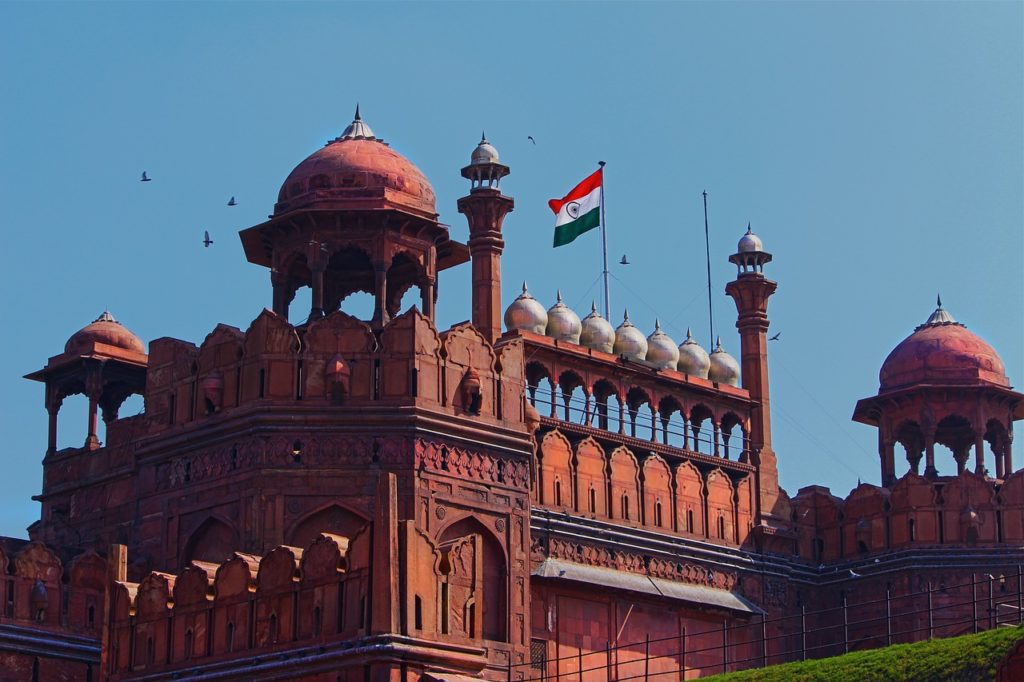
Travel tips
- Outside food is not allowed in the premises of Red Fort.
- Carry your own water bottle.
- Take a cloakroom locker for safety purpose which cost charge of Rs. 20/-
- Local parking is about 500 m away from the main gate.
Opening Times and Prices
- The price of the entrance is of 10 Rupees for Indian & 250 Rupees for Foreigners.
- Camera Charges is 25 Rupees.
- The Red Fort remains open from 9:30 AM to 6:00 PM. Red Fort is closed on Monday.
- Entry of Red Fort is free on Friday.
- From the 19-hour front desk make a local show of lights and music of fables and history India.
- Visit duration 2-3 hours.
Sound & Light Show Timing
- September & October – 7:00 pm – 8:00 pm (Hindi) & 8:30 pm – 9:30 pm (English)
- November to January – 6:00 pm – 7:00 pm (Hindi) & 7:30 pm – 8:30 pm (English)
- February to April – 7:00 pm – 8:00 pm (Hindi) & 8:30 pm – 9:30 pm (English)
- May to August – 7:30 pm – 8:30 pm (Hindi) & 9:00 pm – 10:00 pm (English)
Best time to visit the Red Fort
From the month of October to March is the best time to visit because the weather is very pleasant. Although December & January is the chilliest weather of Delhi, still you can enjoy the Red Fort tour.
About the Author
Leave a Reply Cancel reply
Your email address will not be published. Required fields are marked *
Save my name, email, and website in this browser for the next time I comment.
Recent Posts
- The Ultimate Guide to Private Grand Canyon Helicopter Tours
Why Beaches Resorts Are Your Ultimate Beach Getaway
- Discovering Valletta, Malta: A Guide to Must-Do Activities
- Blue Flag Beaches to Visit in Kent in 2024
- Basking in Budva: A Comprehensive Guide to Montenegro’s Riviera
You may also like these
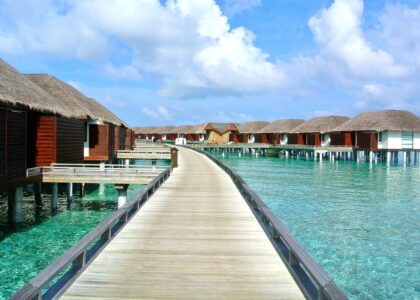
Planning a trip? here are tips for carrying power banks on planes
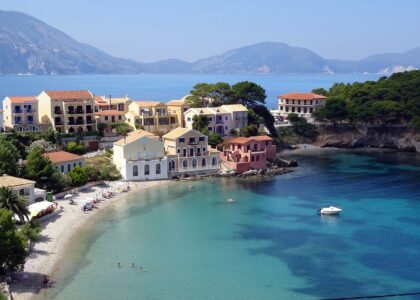
Kefalonia with kids

Boutique Spots: The Online Platform for Uncommon Luxury Escapades
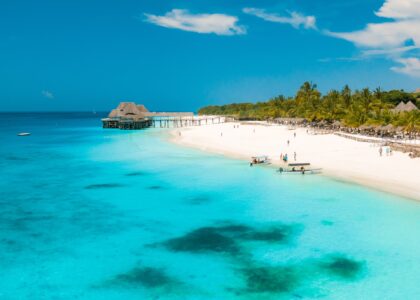
Zanzibar Holidays Tips
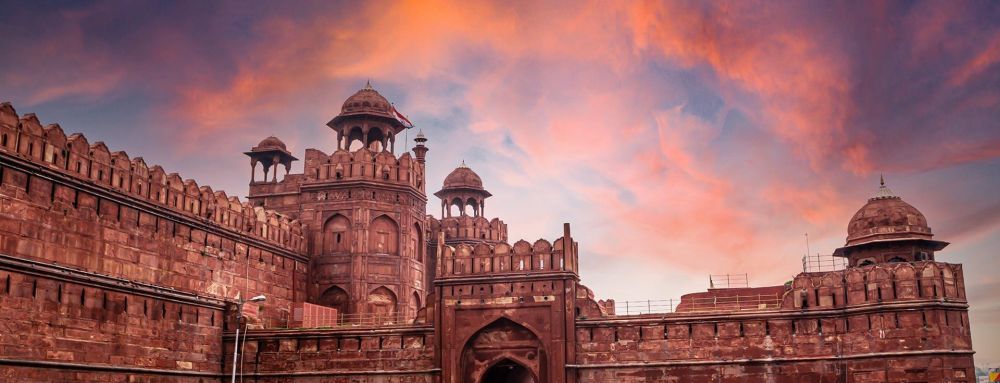
Red Fort Delhi Tourism
- Red Fort Delhi
- Things to do
- Best time to visit
- How to Reach
- Tourist Map
- within 25kms
- within 50kms
- within 100kms
- within 150kms
- within 200kms
- within 250kms
- within 300kms
- within 500kms
Explore Places to Visit Near Red Fort Delhi by Type
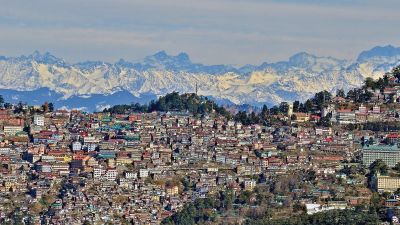
Other Suggested Reads for Red Fort Delhi
- Things to do in Red Fort Delhi
- How to Reach Red Fort Delhi
- Best time to Visit in Red Fort Delhi
- Red Fort Delhi Tourism History
- Food in Red Fort Delhi
- FAQS about Red Fort Delhi
- Red Fort Delhi Tourist Map
Sound and Light Show at Red Fort in Delhi
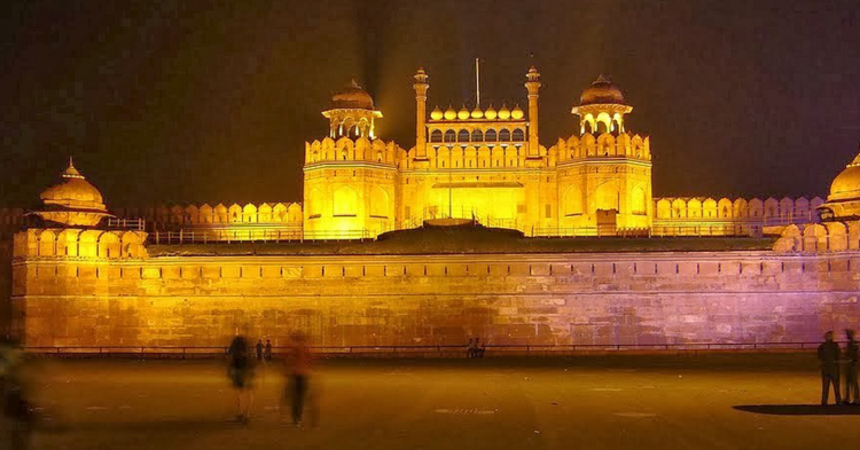
Enter your details to book this Experience
Want to explore & travel delhi plan your visit now.
Every person with wanderlust has Delhi on their list and for the right reason. This culturally diverse city is known for it’s ancient heritage, colorful noise and rich background. Plan your visit soon, for this city has a lot to offer.
Become our Monthly Reader. Subscribe Today!

IMAGES
VIDEO
COMMENTS
Red Fort in Delhi, India is not a prominent structure of past but hold equally important place even in present. It is the place from where Prime Minister of India hoists national flag every year on the eve of Independence Day, on August 15th. ... One of the major attractions of Lal Qila Delhi is the light and sound show. The Red fort sound and ...
Address. Netaji Subhash Marg, Lal Qila, Chandni Chowk, New Delhi, Delhi, 110006, India. Phone +91 11 2327 7705. Web Visit website. Delhi's colossal Red Fort (also known as Lal Qila) was home to emperors of the formidable Mughal dynasty for almost 200 years, until 1857 when the British took over. However, the fort isn't just a long-standing ...
The Red Fort of Delhi, or Lal Qila was constructed by the Mughal Emperor Shah Jahan, he of the Taj Mahal fame. In Agra (Shah Jahan's old capital city) the streets were becoming too narrow and crowded for the parades, ceremonies and processions the mighty Emperor demanded. Shah Jahan therefore decided to move his capital from Agra to Delhi and ...
2. This fort is a must-visit for all the travellers to experience the essence of Delhi. 3. The place is well maintained and organised. 4. Ticket pricing is affordable and best suitable for day trip visit along with family, friends, and group hangouts. 5. The place is easily accessible by public and private transport.
Book your tickets online for Red Fort, New Delhi: See 5,583 reviews, articles, and 5,586 photos of Red Fort, ranked No.37 on Tripadvisor among 588 attractions in New Delhi. ... Attractions near Red Fort: (0.05 km) Chhatta Chowk Bazaar (0.14 km) India Passion Tours (0.20 km) India Private Driver (0.15 km) Lahori Gate
Welcome to Red Fort Delhi, a UNESCO World Heritage Site, built by Emperor Shah Jahan and surrounded by a magnificent 18m-high wall, this fort took 10 years to construct (1638-48). ... All Rural Agro-Tourism Crafts-Tourism Tribal-Tourism Eco-Tourism Wildlife-Tourism Live Like a Local.
The Red Fort or Lal Qila (Hindustani: [laːl qiːlaː]) is a historic fort in the Old Delhi neighbourhood of Delhi, India, that historically served as the main residence of the Mughal emperors.Emperor Shah Jahan commissioned construction of the Red Fort on 12 May 1639, when he decided to shift his capital from Agra to Delhi.Originally red and white, its design is credited to architect Ustad ...
Built by Mughal emperor Shah Jahan as the palace fort of his capital Shahjahanabad, Red Fort is famous for its massive enclosing walls. The architecture of the fort reflects a seamless fusion of Islamic, Persian, Timurid and Hindu styles. The major attractions are the Diwan-i-khas, also known as the Shah Mahal, the Diwan-i-aam or the Hall of ...
Red Fort. Old Delhi (Shahjahanabad), Delhi, India, Asia. Top choice in Old Delhi (Shahjahanabad) Founded by Emperor Shah Jahan and surrounded by a magnificent 18m-high wall, this fort took 10 years to construct (1638-48) and is rumoured to have had the decapitated bodies of prisoners built into the foundations for luck.
It was built by Shah Jahān in the mid-17th century and remains a major tourist attraction. The fort was designated a UNESCO World Heritage site in 2007. Red Fort, designated a UNESCO World Heritage site in 2007, Old Delhi, India. The fort's massive red sandstone walls, which stand 75 feet (23 metres) high, enclose a complex of palaces and ...
Red Fort. Address: Netaji Subhash Marg, Lal Qila, Chandni Chowk, New Delhi, Delhi 110006. Opening hours: Tue - Sun: 6am - 9pm (closed on Mon) Cost: 0.54 USD for Indians; 8 USD for Foreigners. Department of tourism: Delhi Tourism. News & updates for Red Fort: Red Fort: Know The History About The Monumental Structure.
The Red Fort has been UNESCO World Heritage Listed since 2007 and is one of the top historic attractions in Delhi. Visitors can see not only the defenses and thick fortifications of the fort but also the royal palace part of the complex (it served the duo role of fort and palace). Main Gate: Lahori Gate.
History. In 1638, the Mughal Emperor Shah Jahan moved the capital of his empire from Agra to a newly constructed city in Delhi that he called Shahjahanabad. Along with the construction of this new city, he laid the foundations of his palace, the Red Fort or Lal Qila. This massive walled citadel with red sandstone walls took nearly a decade to ...
The incredible Indian capital of New Delhi is a popular tourist destination, drawing travelers by the drove who wish to experience the rich culture and mysticism of India. Delhi is the perfect amalgamation of the old and the modern and you will find yourself time traveling as you set foot inside the ramparts of the historic Red Fort or Lal Qila.The Red Fort is an architectural marvel built in ...
The Red Fort, also known as Lal Qila, was the main residence of Mughal emperors from 1648 until 1857. Built during the reign of Emperor Shah Jahan, the fort witnessed various historical events and changes in power. Post-independence, it became a symbol of India's heritage and freedom struggle.
Red Fort New Delhi - Instant Information about Red Fort, tourist attractions, visiting time, how to reach, best time to visit, inside, Location, Entry Fee, attraction, Know the facts, history and more. ... Tourist Attractions in Red Fort. Constructed in the 17th century, this monument is an attraction by itself. The fort covers 254 acres of ...
For adults, it is Rs 80 and Rs 30 for kids. Timing: The Red Fort remains open every day from 9.30 am to 4.30 pm. The fort, however, remains closed on Mondays. Check out the Delhi Tourism website for any change of the entry and exit timings of this tourist venue depending on special national events or so.
New Delhi Tourism ; Places To Visit in New Delhi ; Red Fort Red Fort ... the Persian Emperor Nadir Shah invaded Delhi and looted the Red Fort, taking away with himself the precious Peacock throne. The Fort was captured, plundered and attacked several times between 1739 and 1857 by Ahmad Shah, Marathas, Sikhs and the British. To raise funds for ...
The Red Fort remains open from 9:30 AM to 6:00 PM. Red Fort is closed on Monday. Entry of Red Fort is free on Friday. From the 19-hour front desk make a local show of lights and music of fables and history India. Visit duration 2-3 hours. Sound & Light Show Timing. September & October - 7:00 pm - 8:00 pm (Hindi) & 8:30 pm - 9:30 pm (English)
Red Fort Delhi Tourism. Type of destination: Historic Site. Ideal visit duration: 2-3 hours. The Red Fort in Delhi, India, known locally as Lal Qila, is a historic fortification in the city of Delhi that served as the main residence of the Mughal emperors for nearly 200 years. It was constructed by the fifth Mughal Emperor, Shah Jahan, in 1639 ...
The Red Fort complex is one such structure. Originally built to be the palace fort of Shahjahanabad, the fifth Mughal Emperor Shah Jahan's capital, its walls were intended to protect it from invaders and were almost impregnable. Today, this heritage site attracts visitors from far and wide and is of great cultural and even patriotic relevance.
The distance between New Delhi and the Red Fort in Delhi is approximately 5 to 6 kilometers. It usually takes around 20 to 30 minutes to travel from New Delhi to the Red Fort by car, depending on the traffic. Discover India's heritage at Red Fort in Delhi. Explore its Mughal architecture, rich history, and cultural significance.
The sound & light show at Red Fort is a must watch for the foreign tourists as they get to know about the history of India in such dynamic way. Let us organize a comfortable personalized package for you. Show Timings: May August: - 7:30 pm to 8:30 pm (Hindi) 9:00 pm to 10:00 pm (English) September October: - 7:00 pm to 8:00 pm (Hindi)